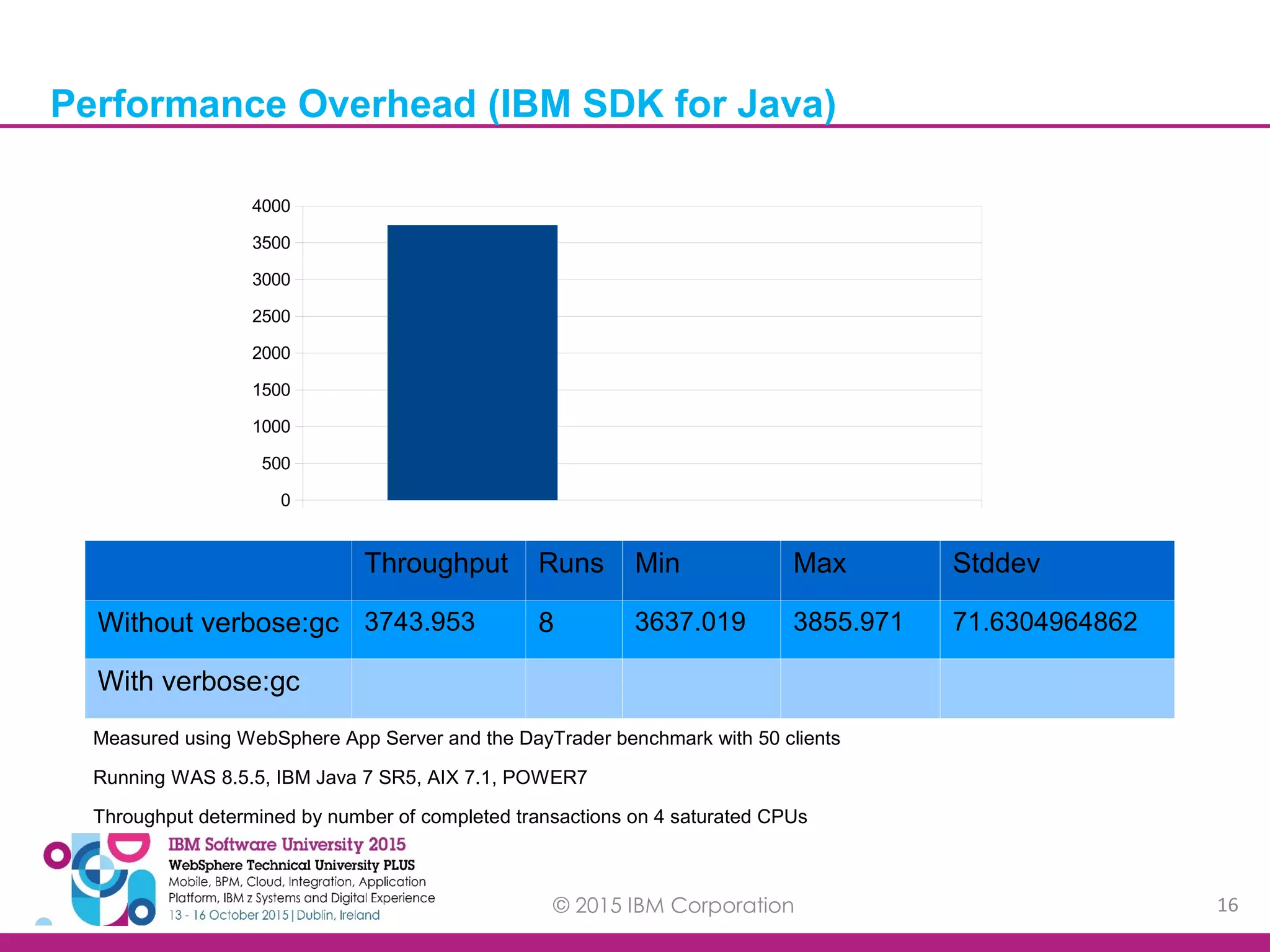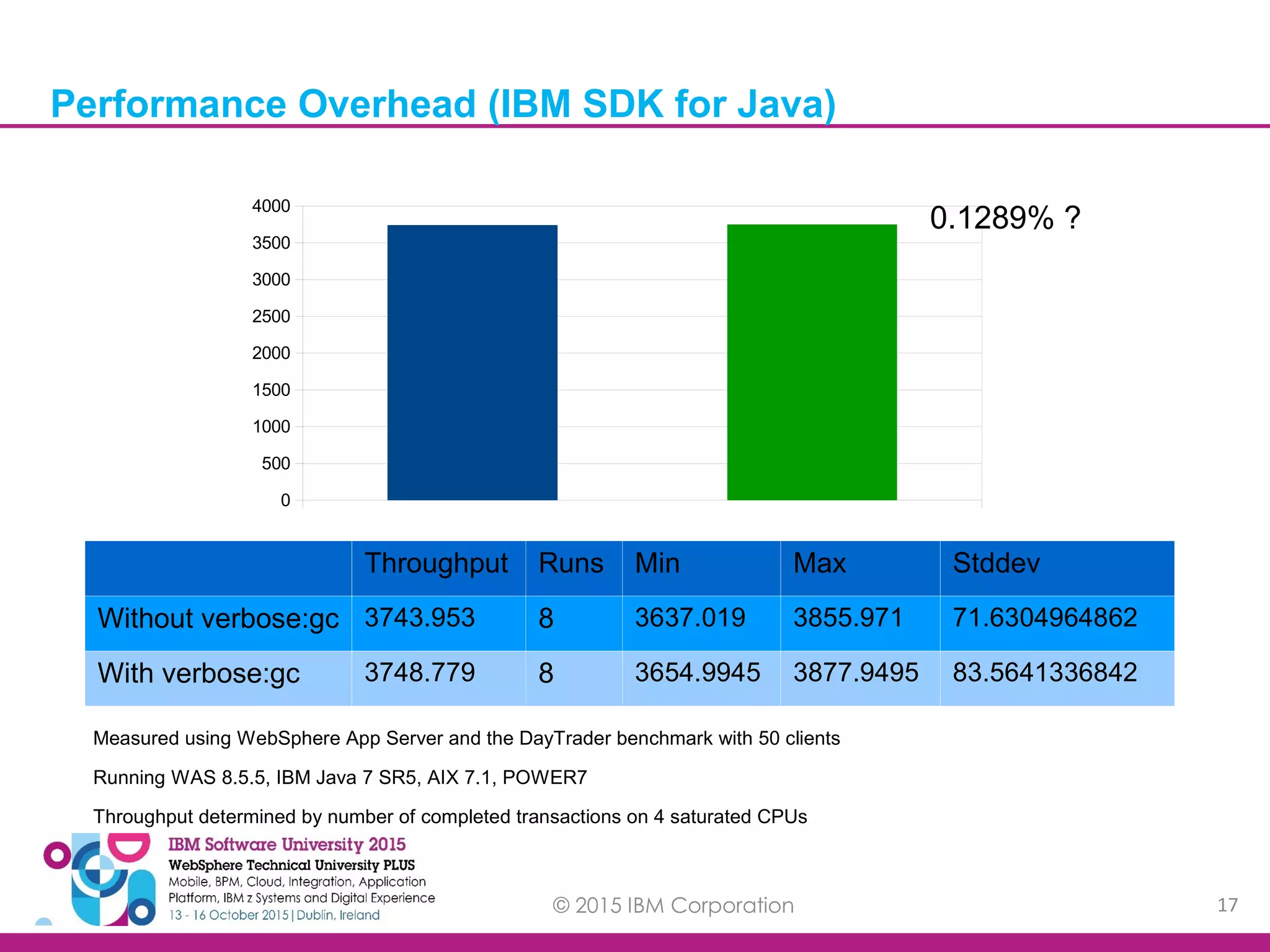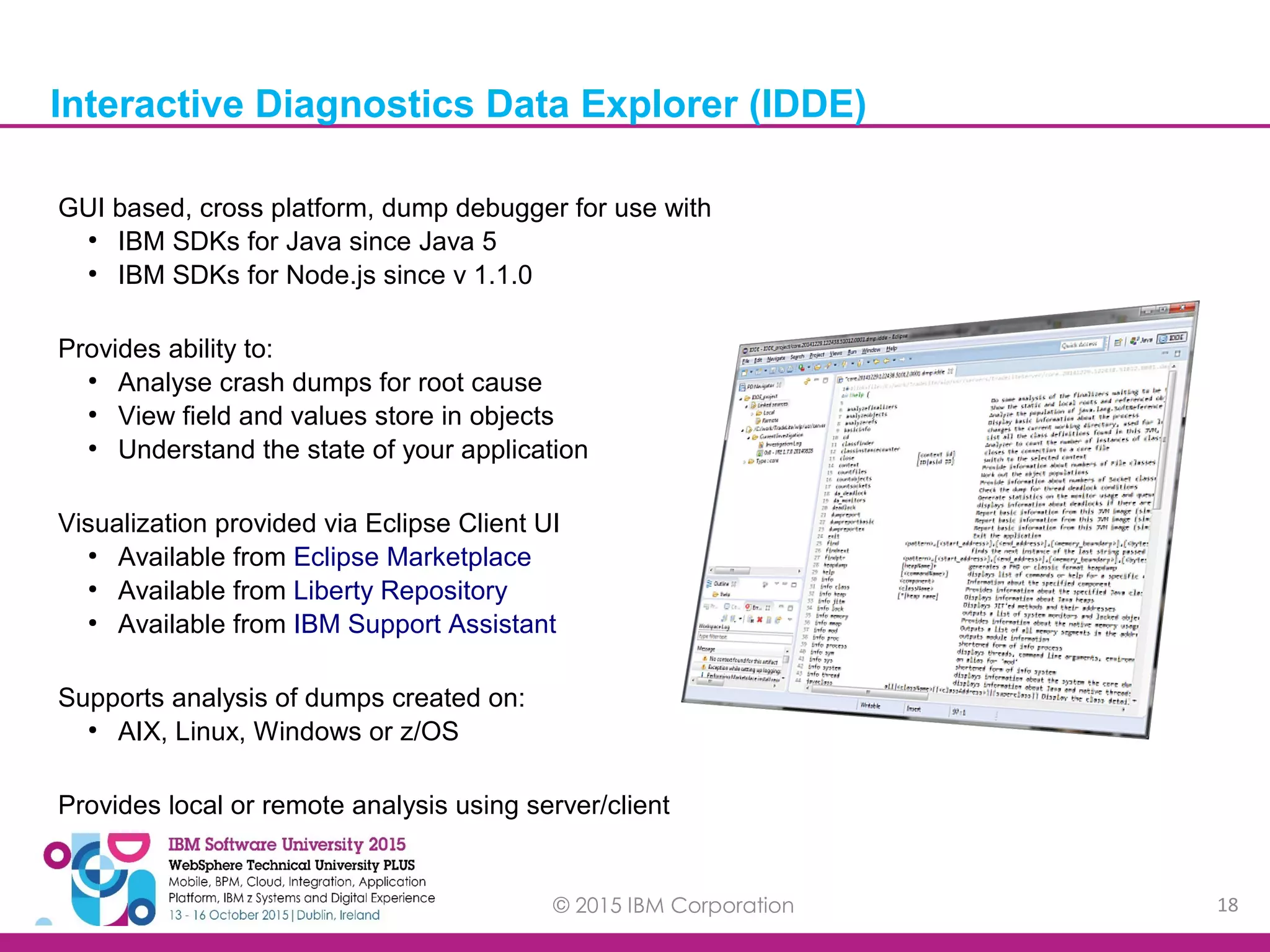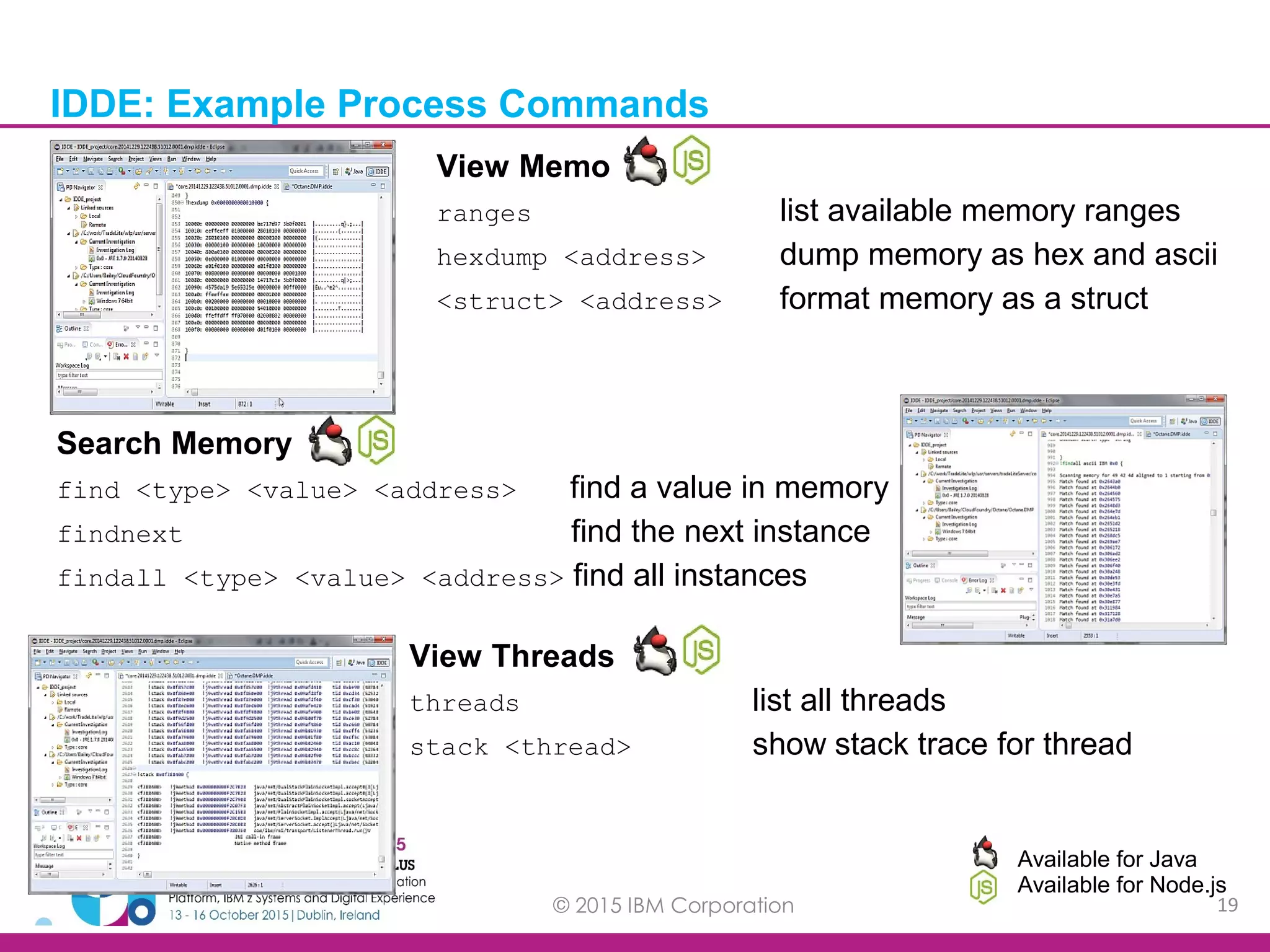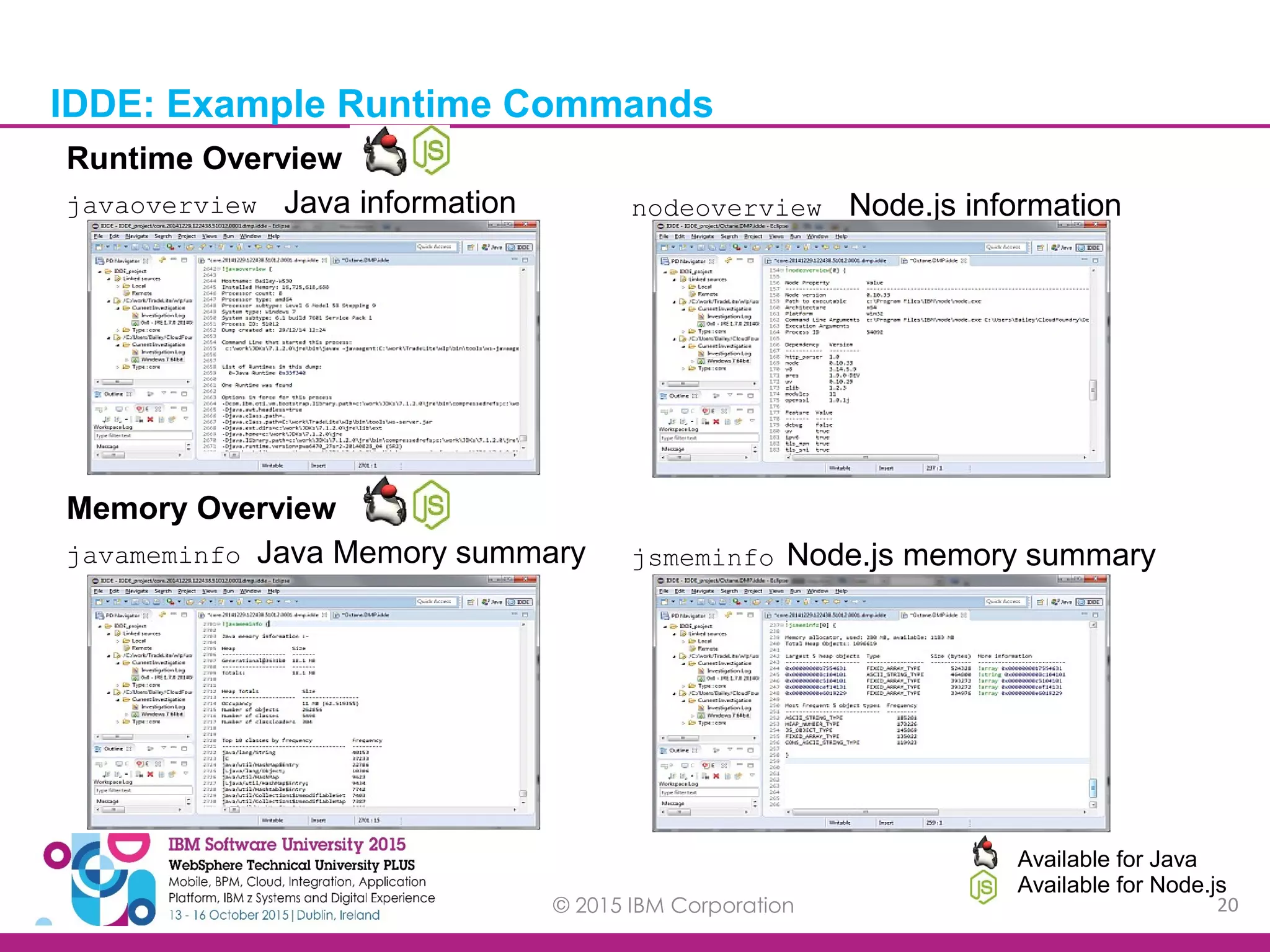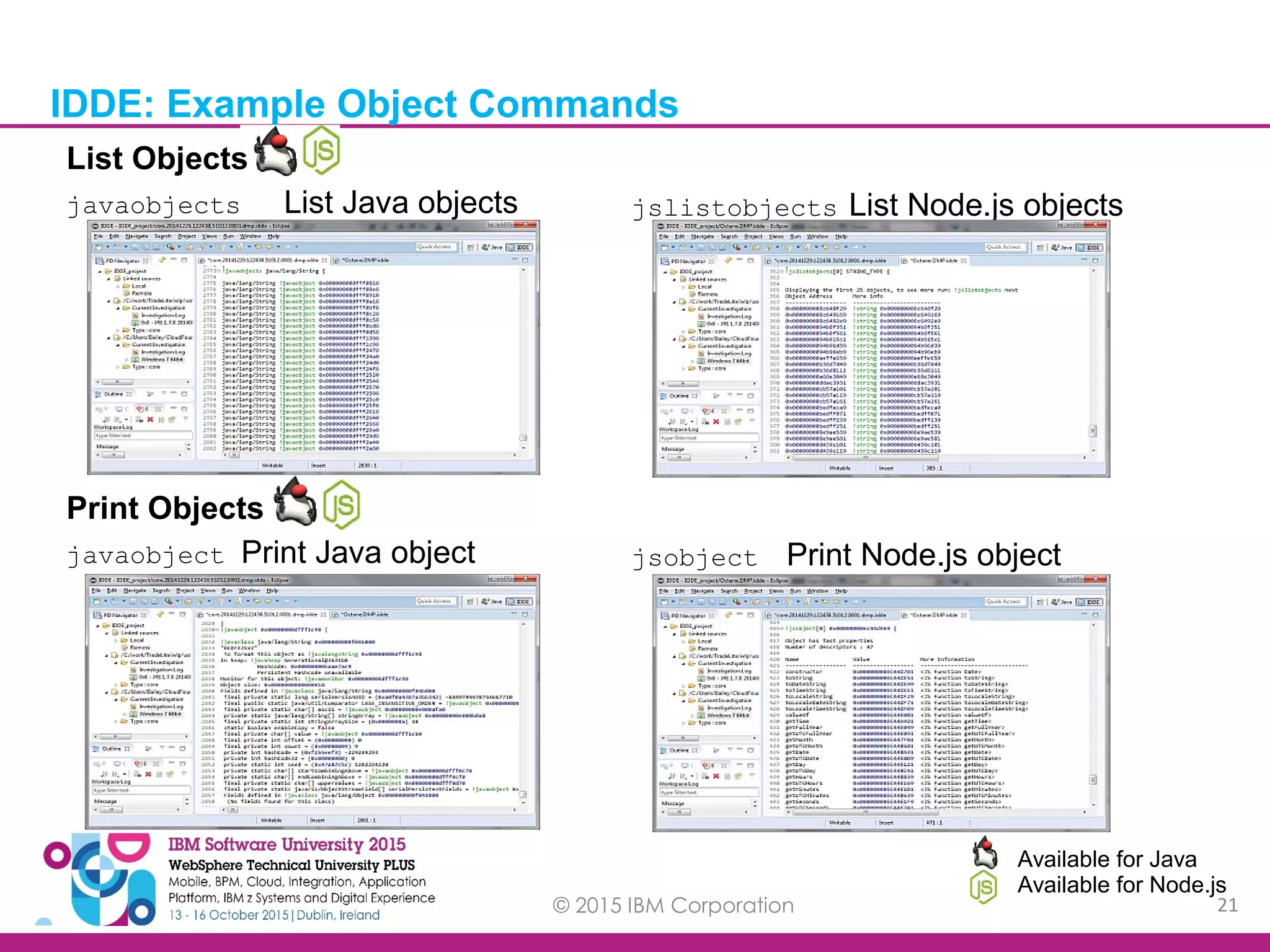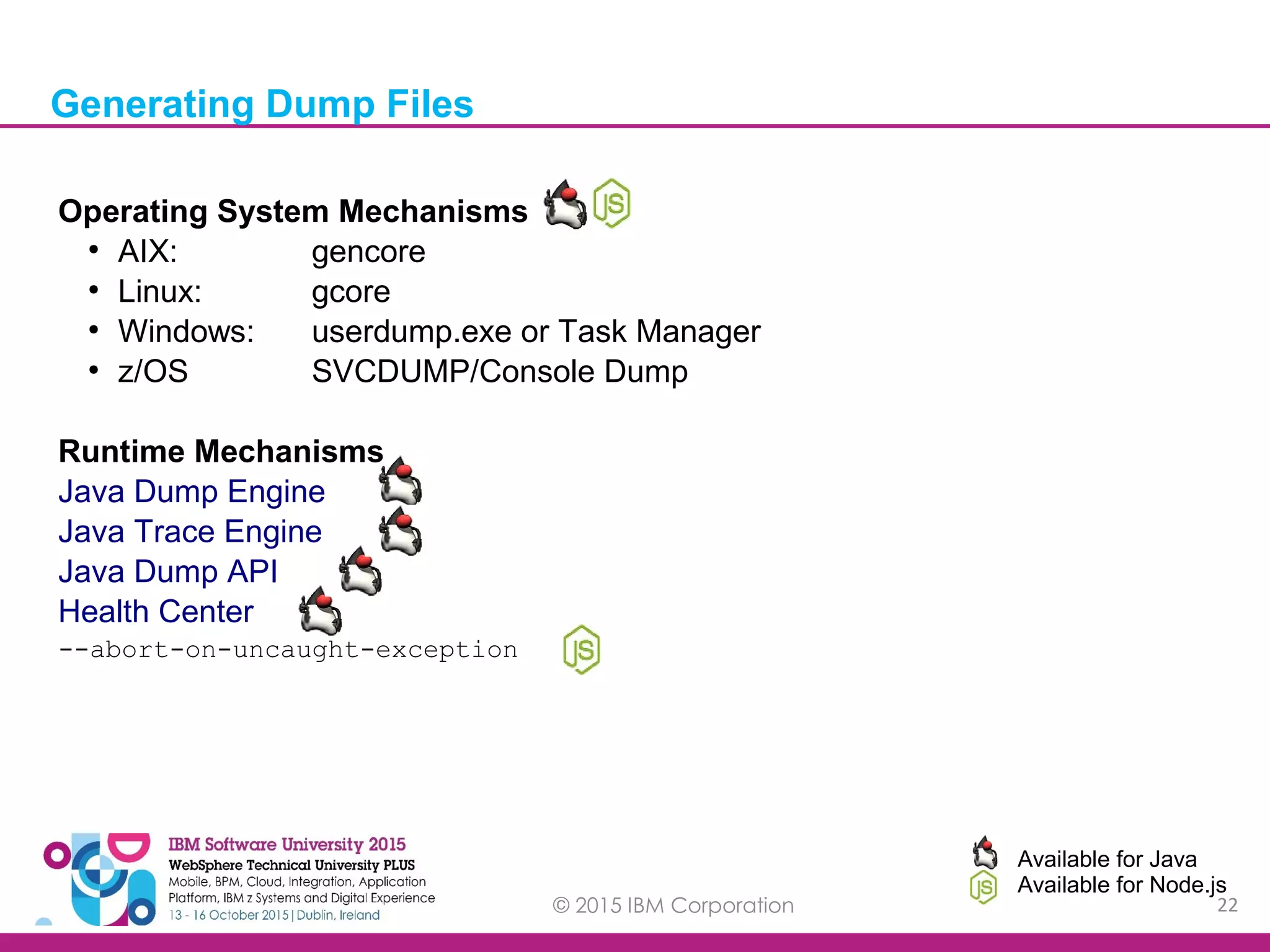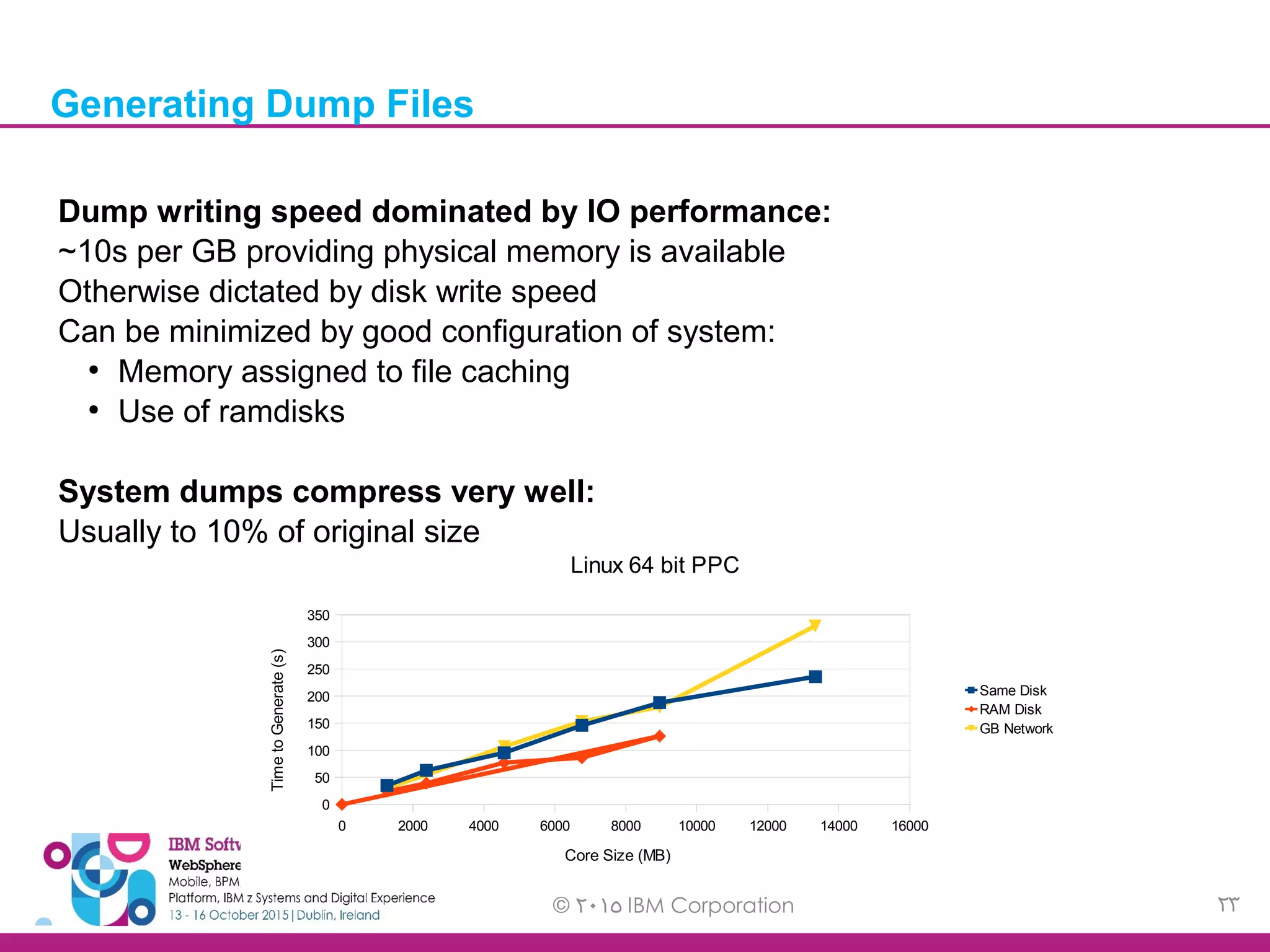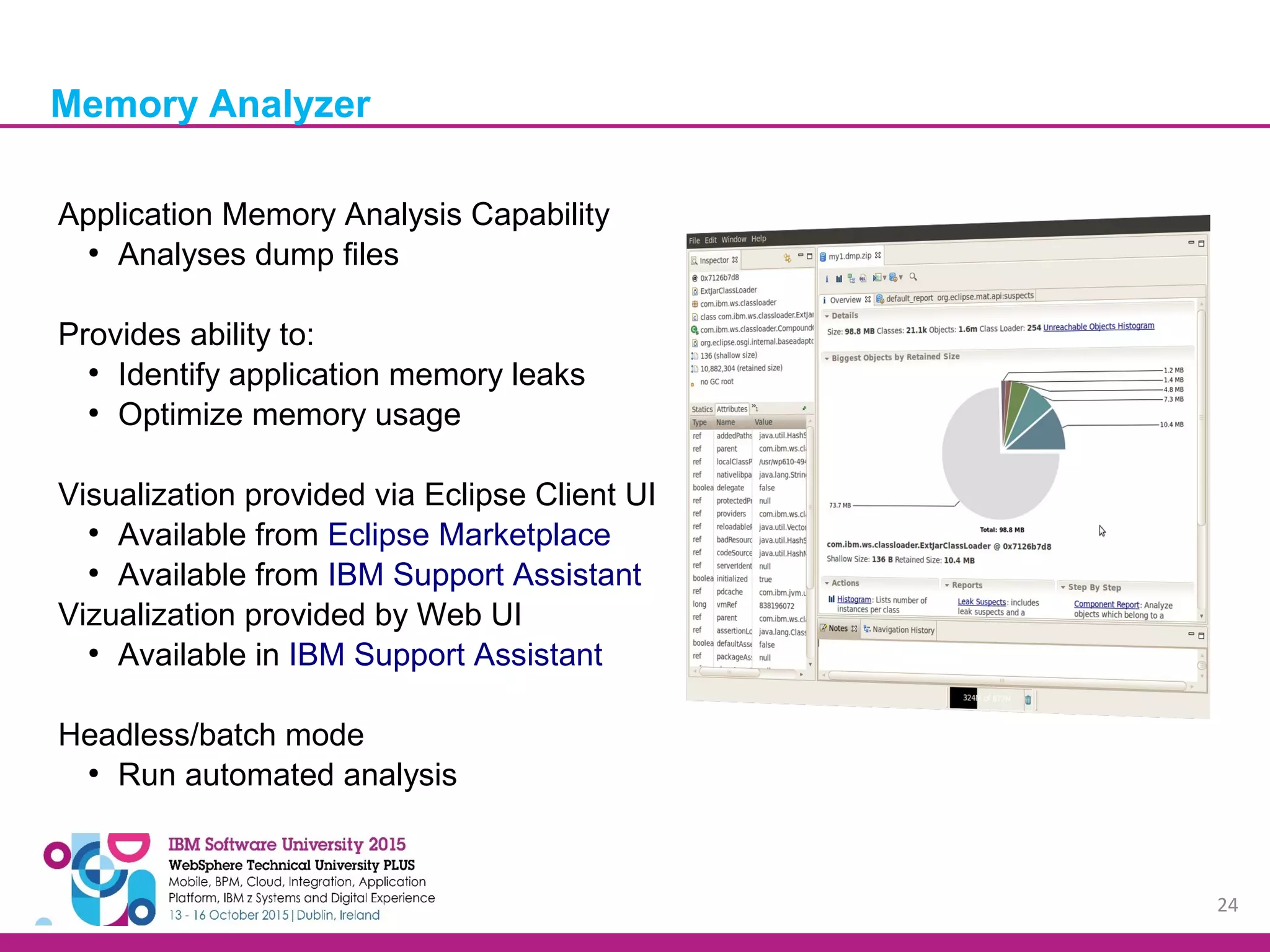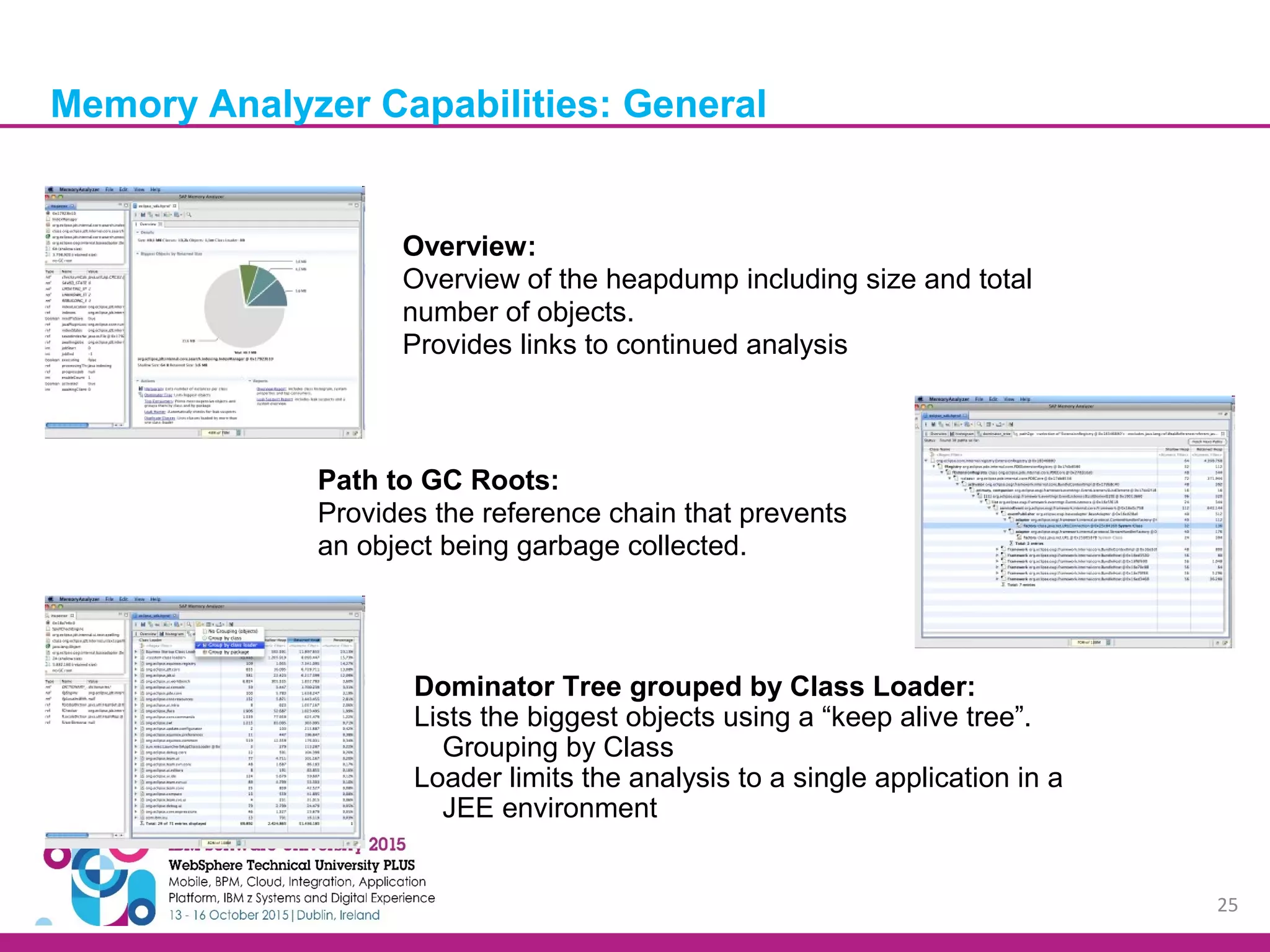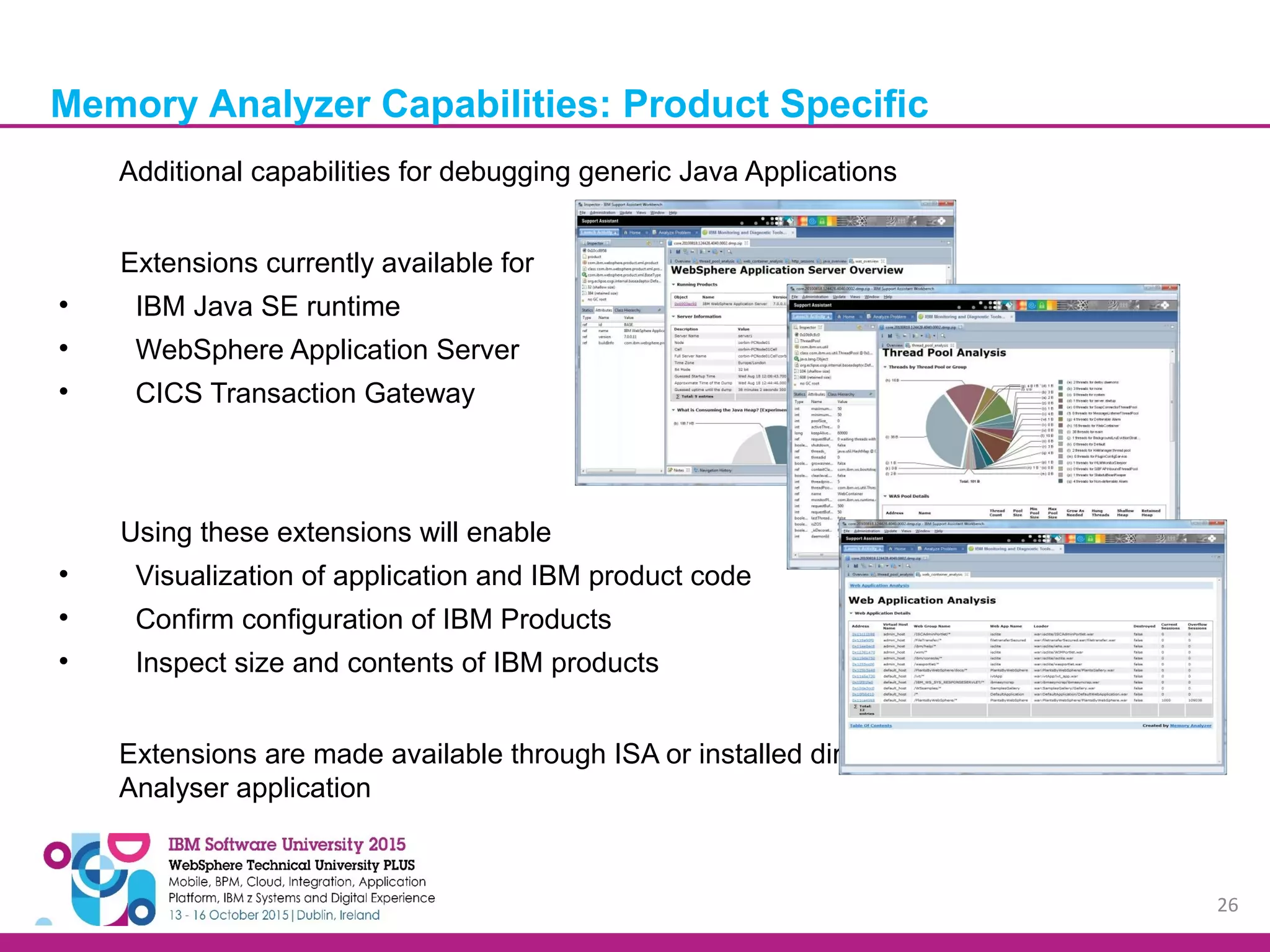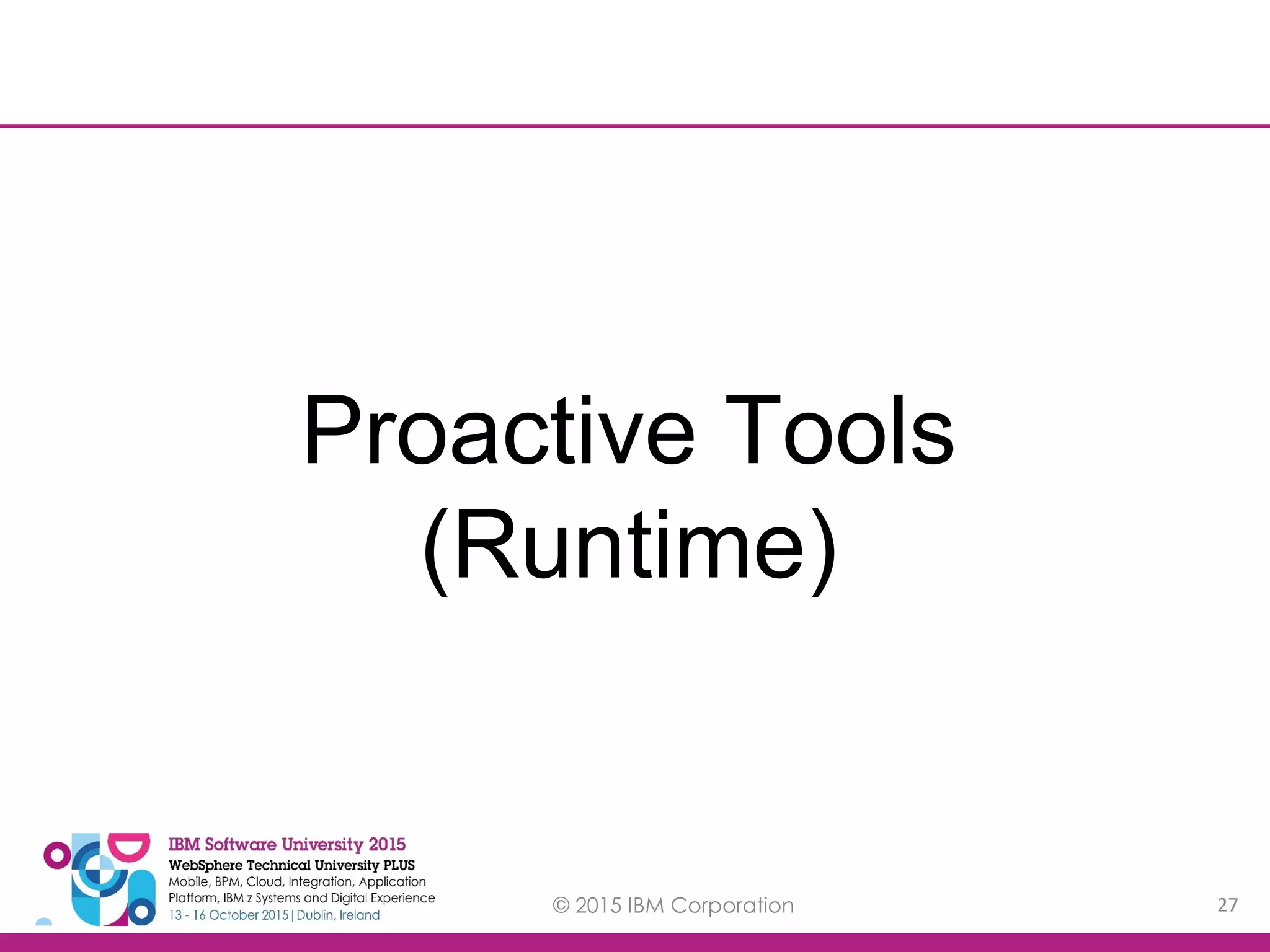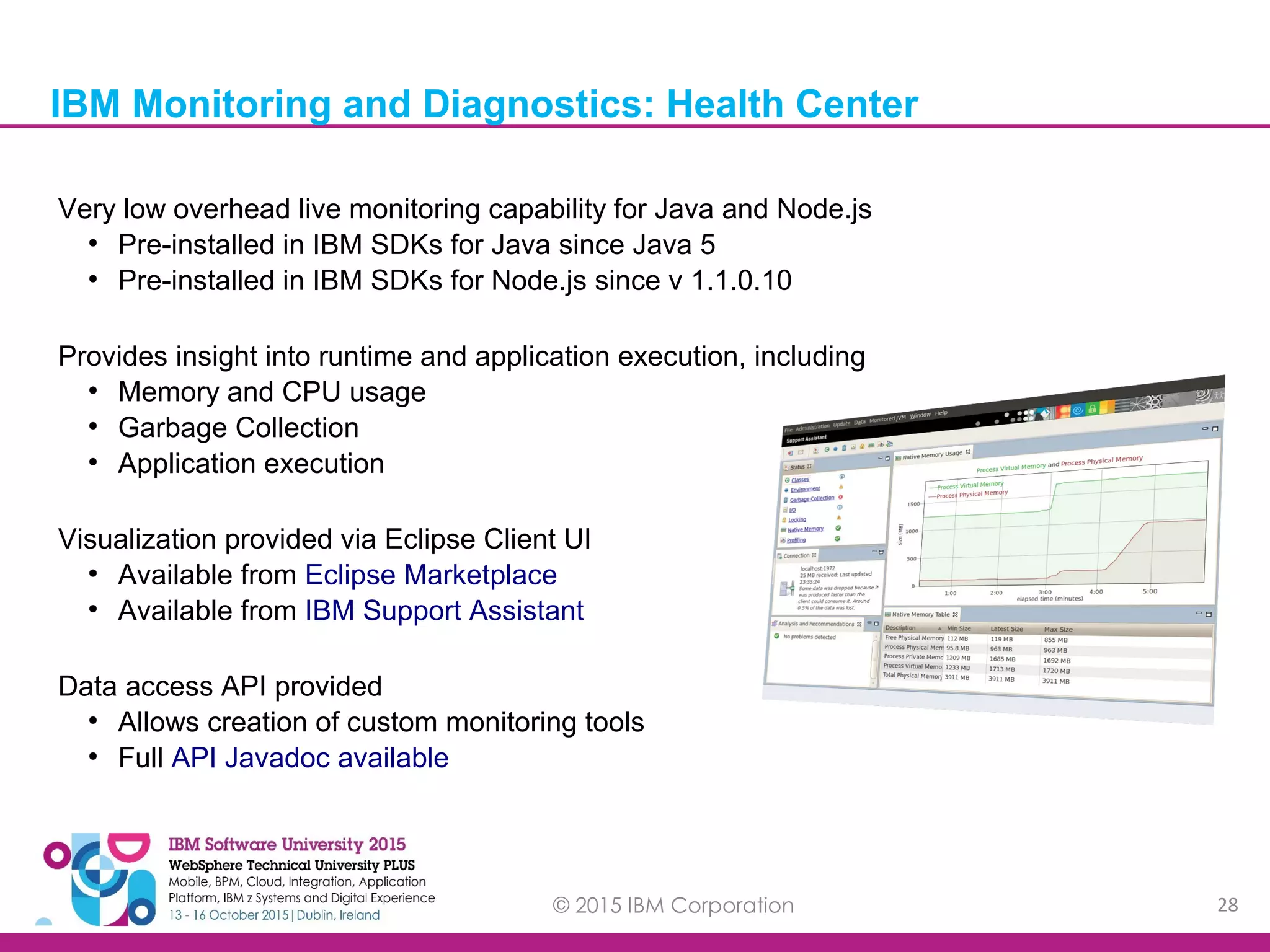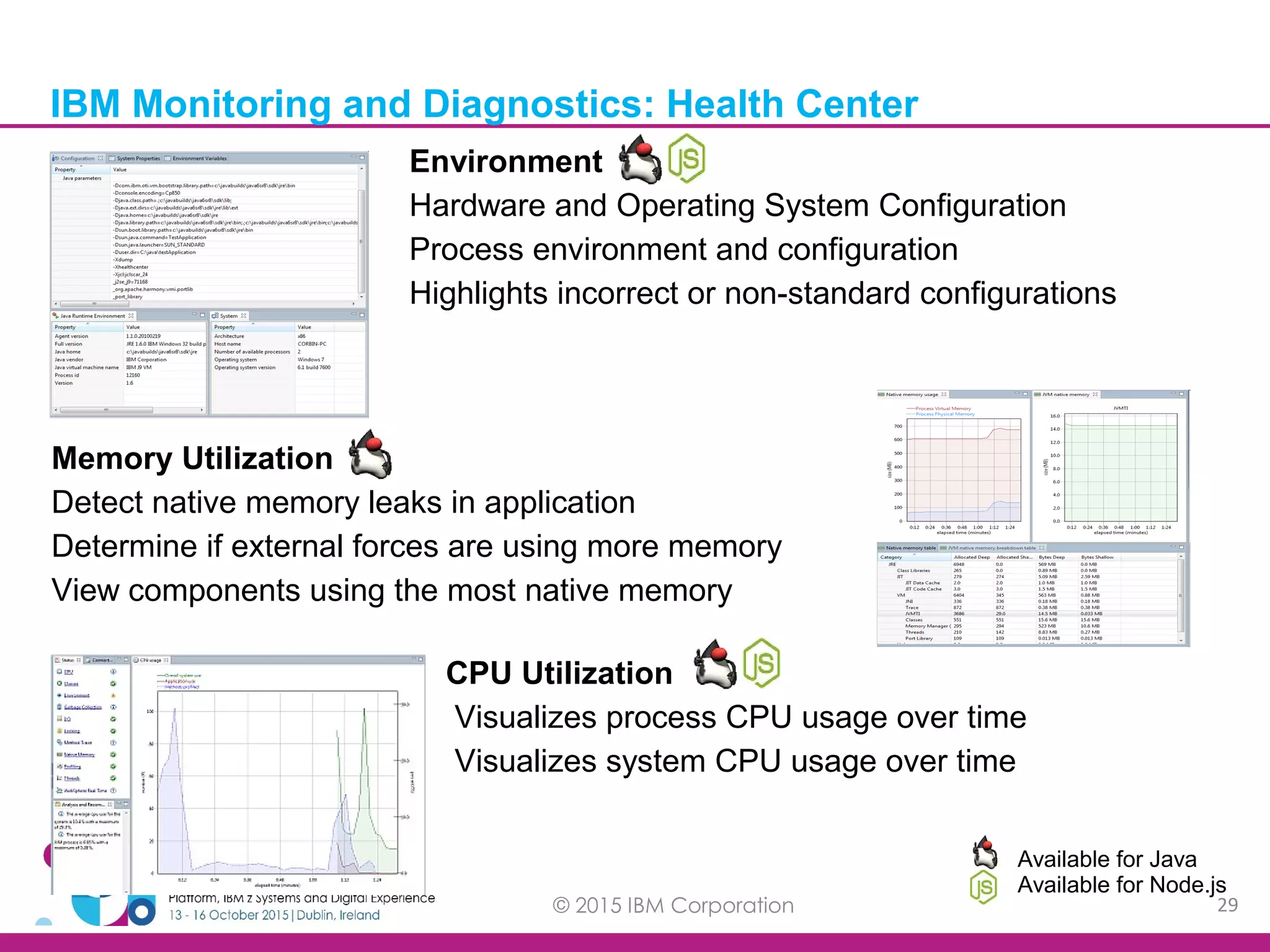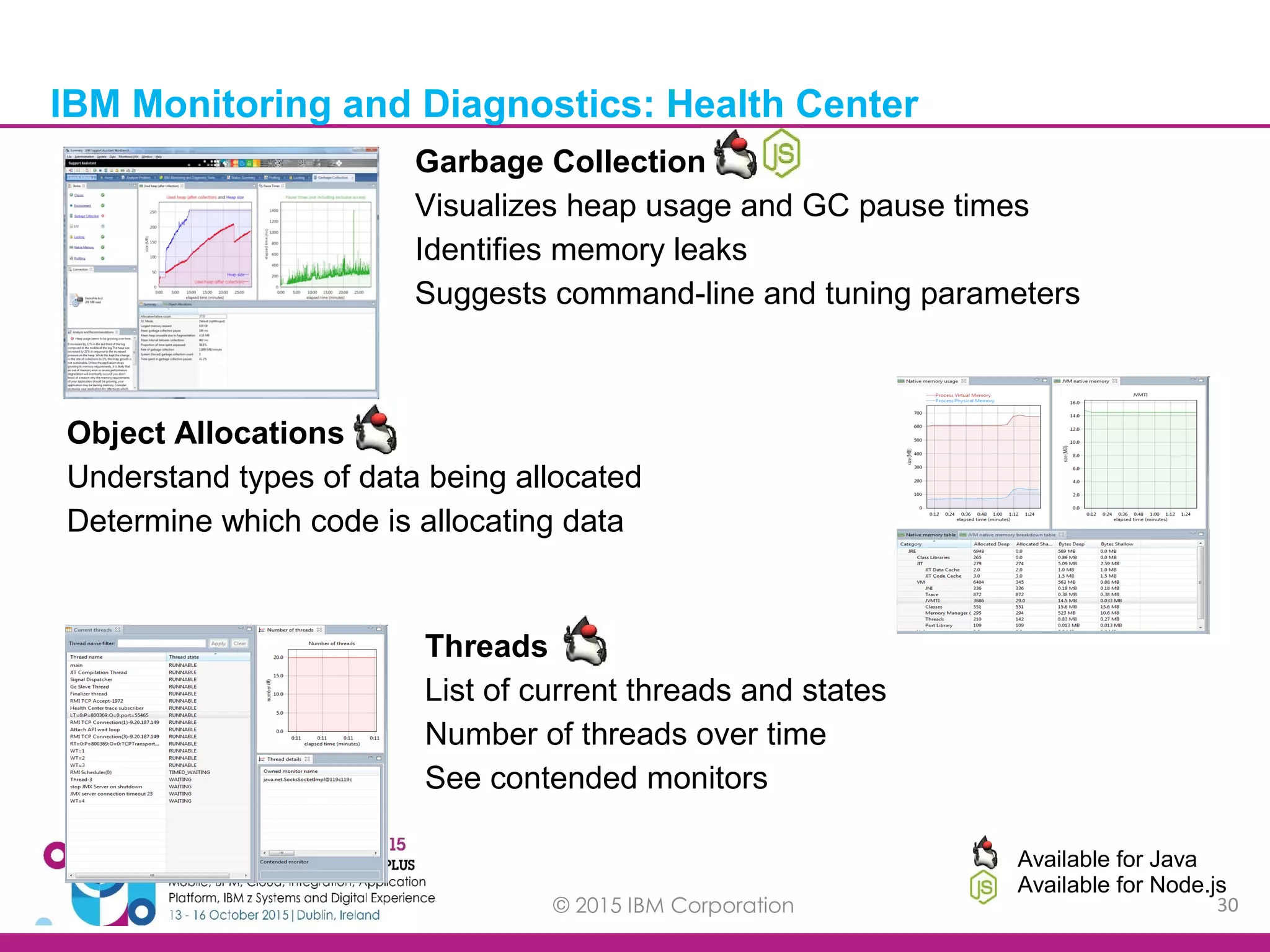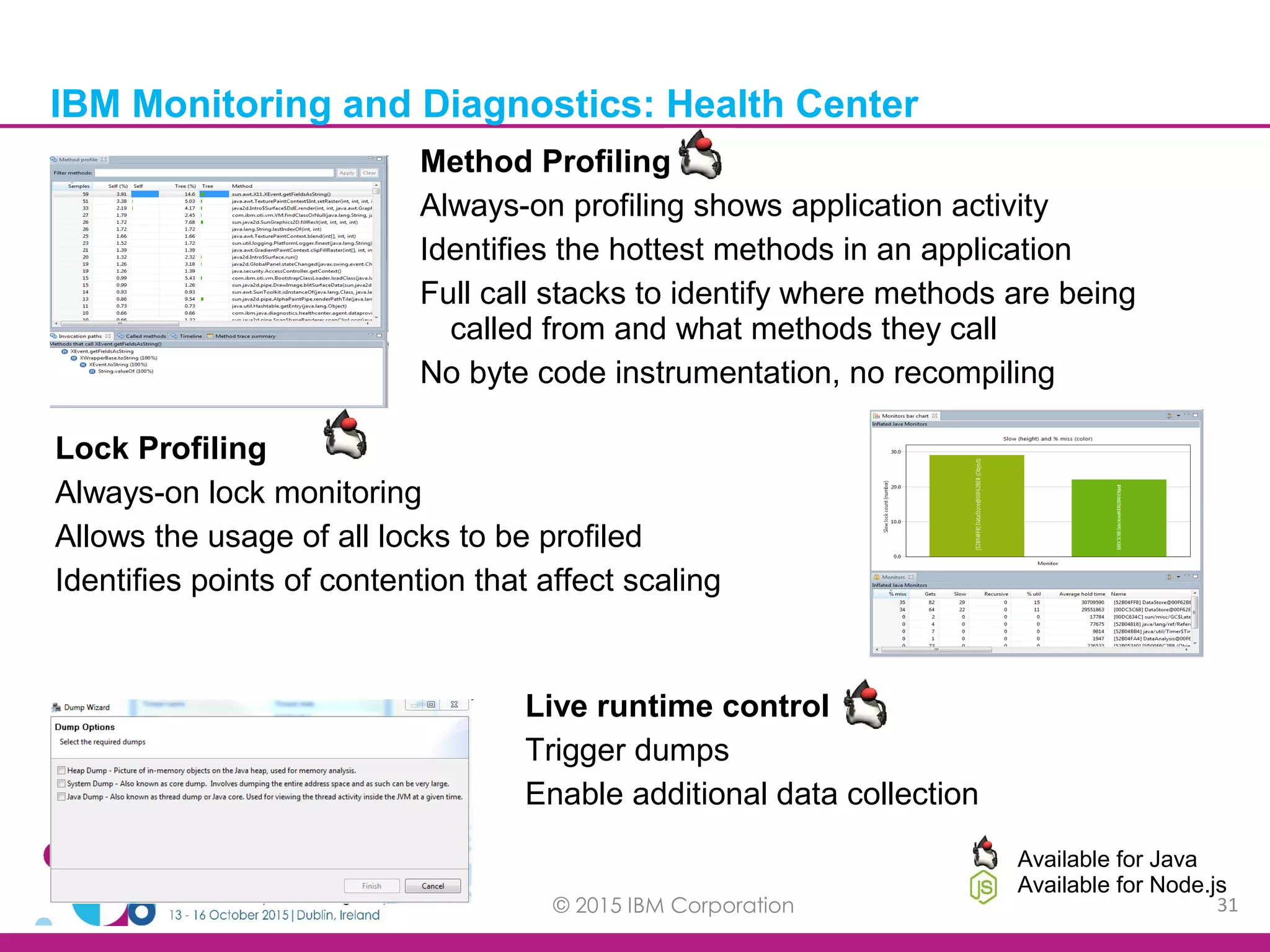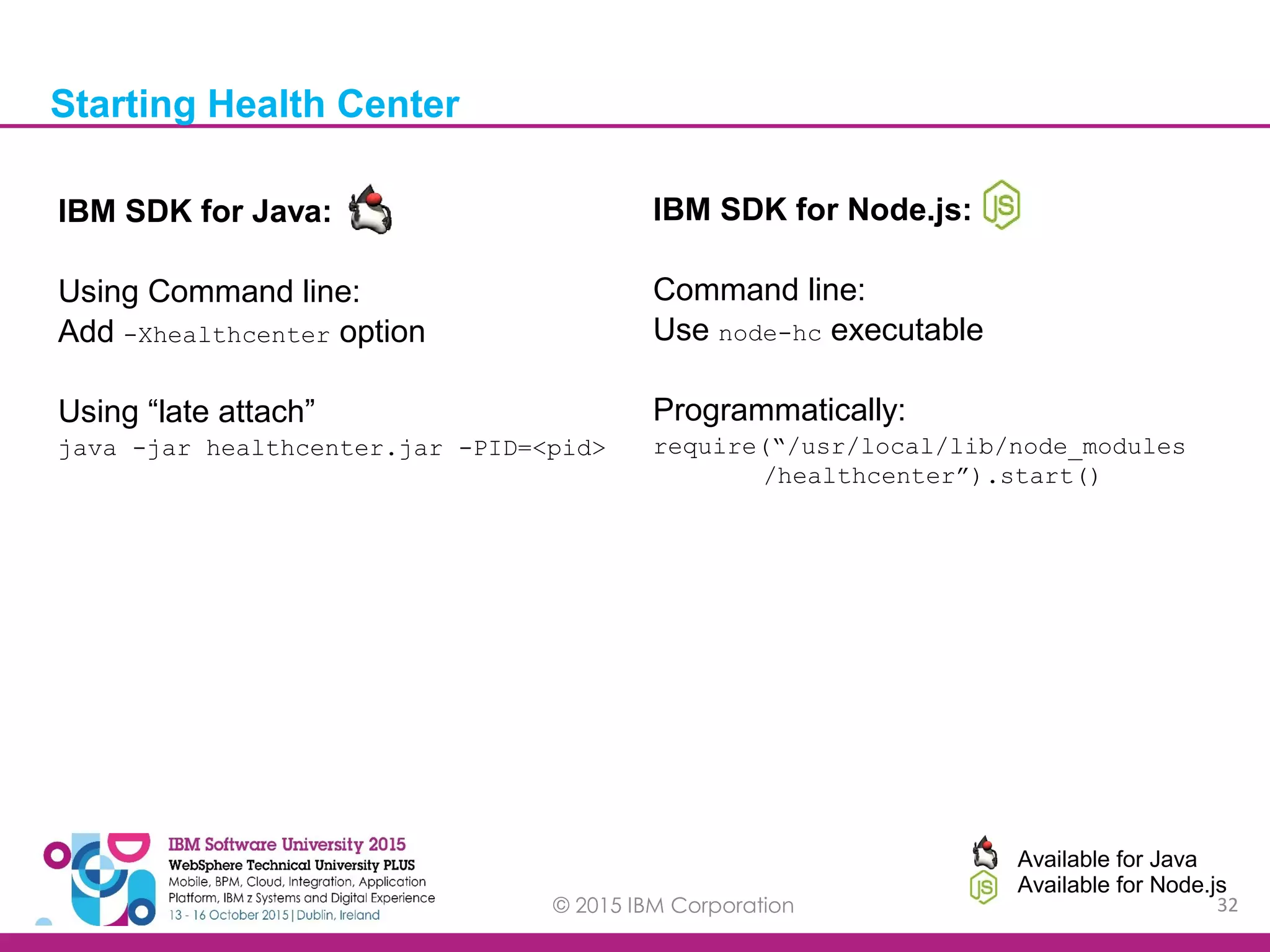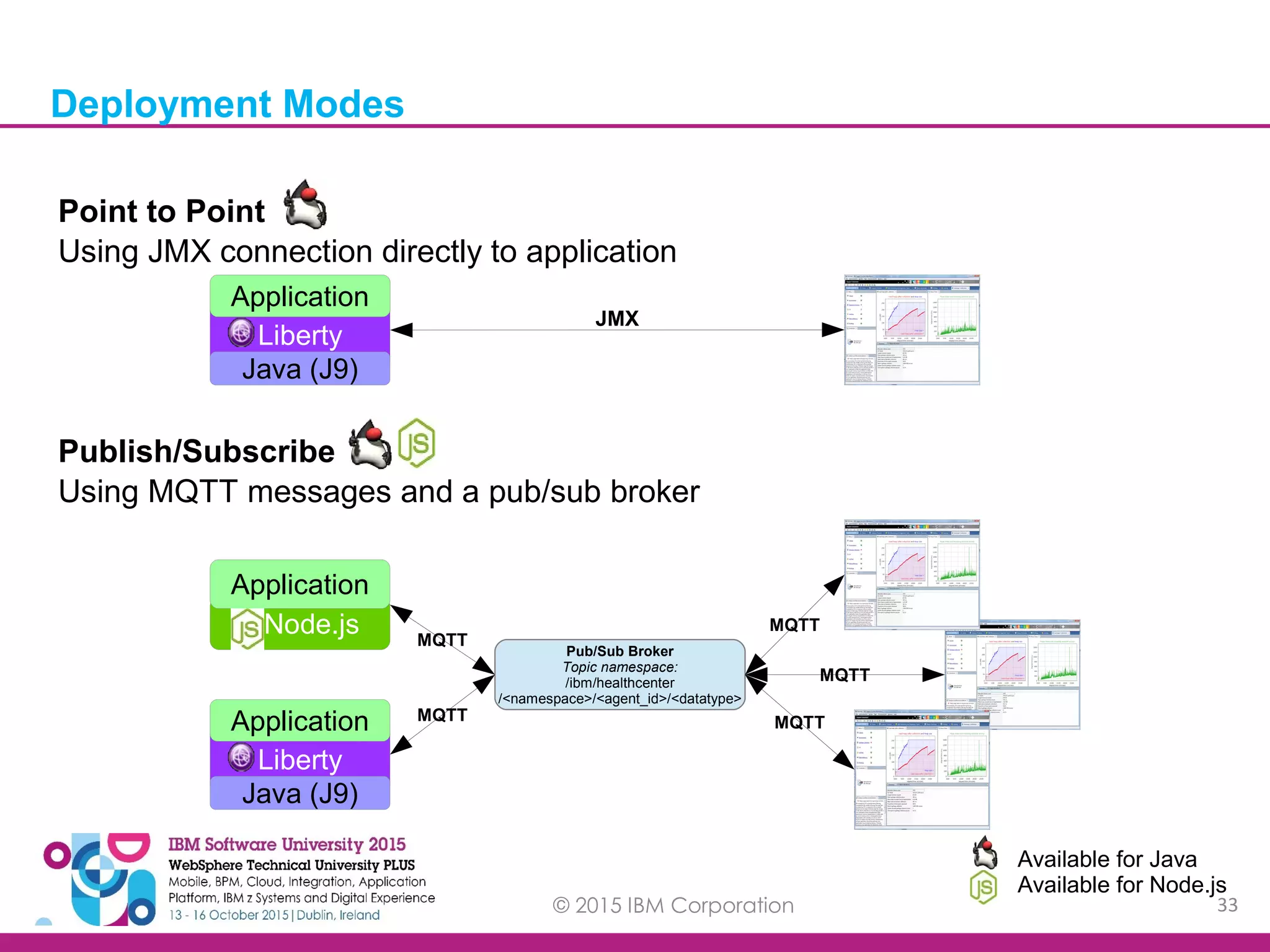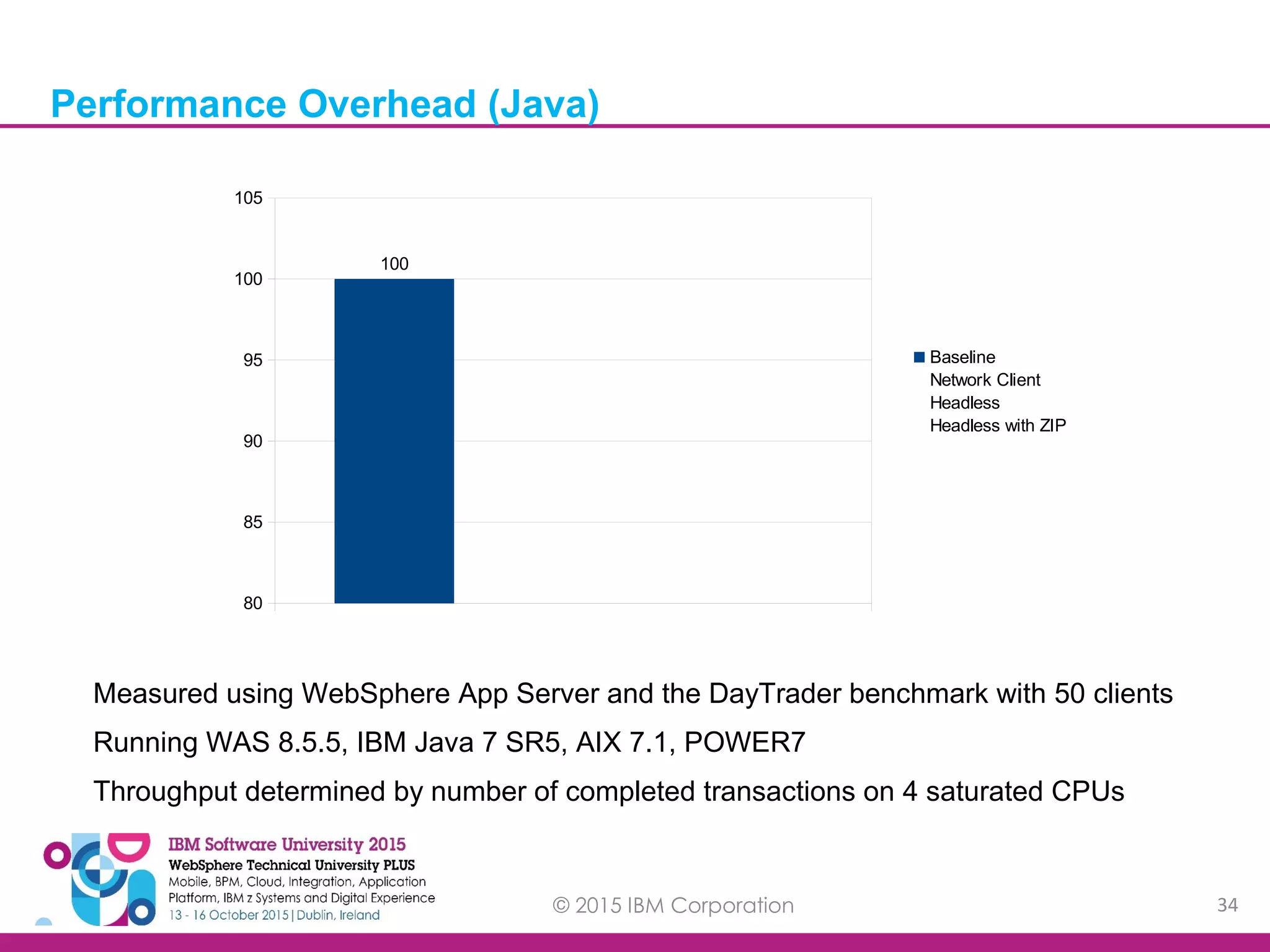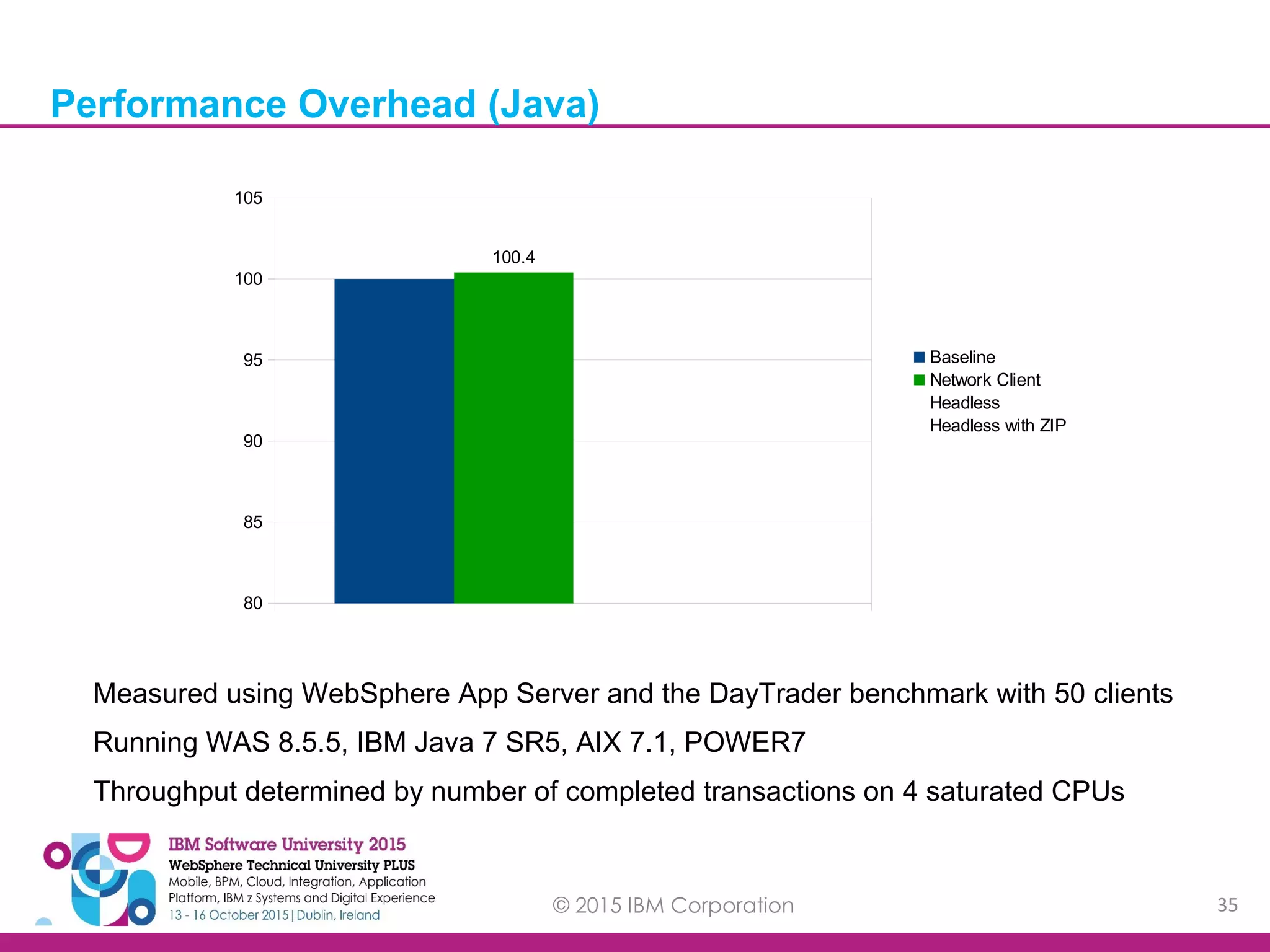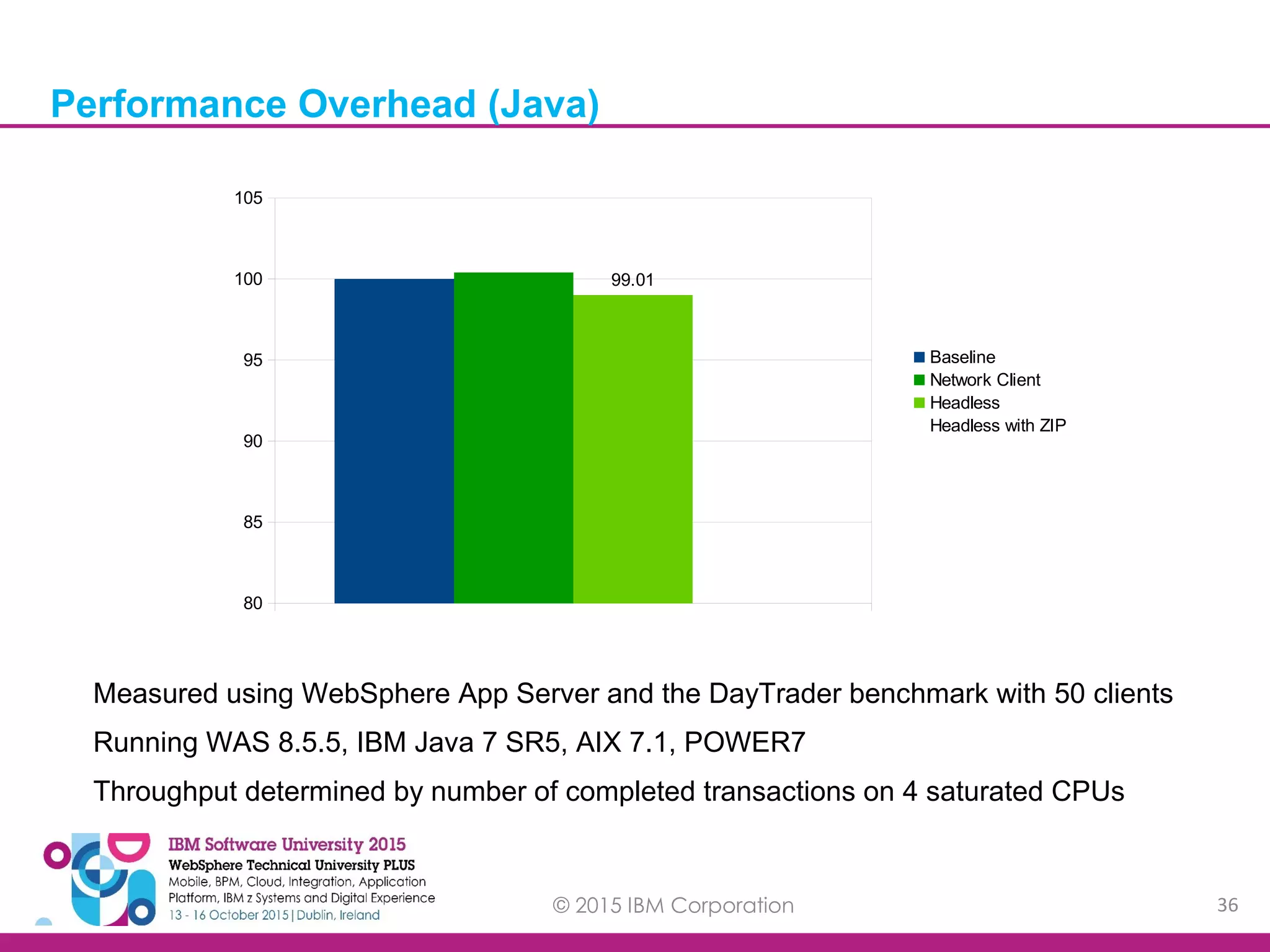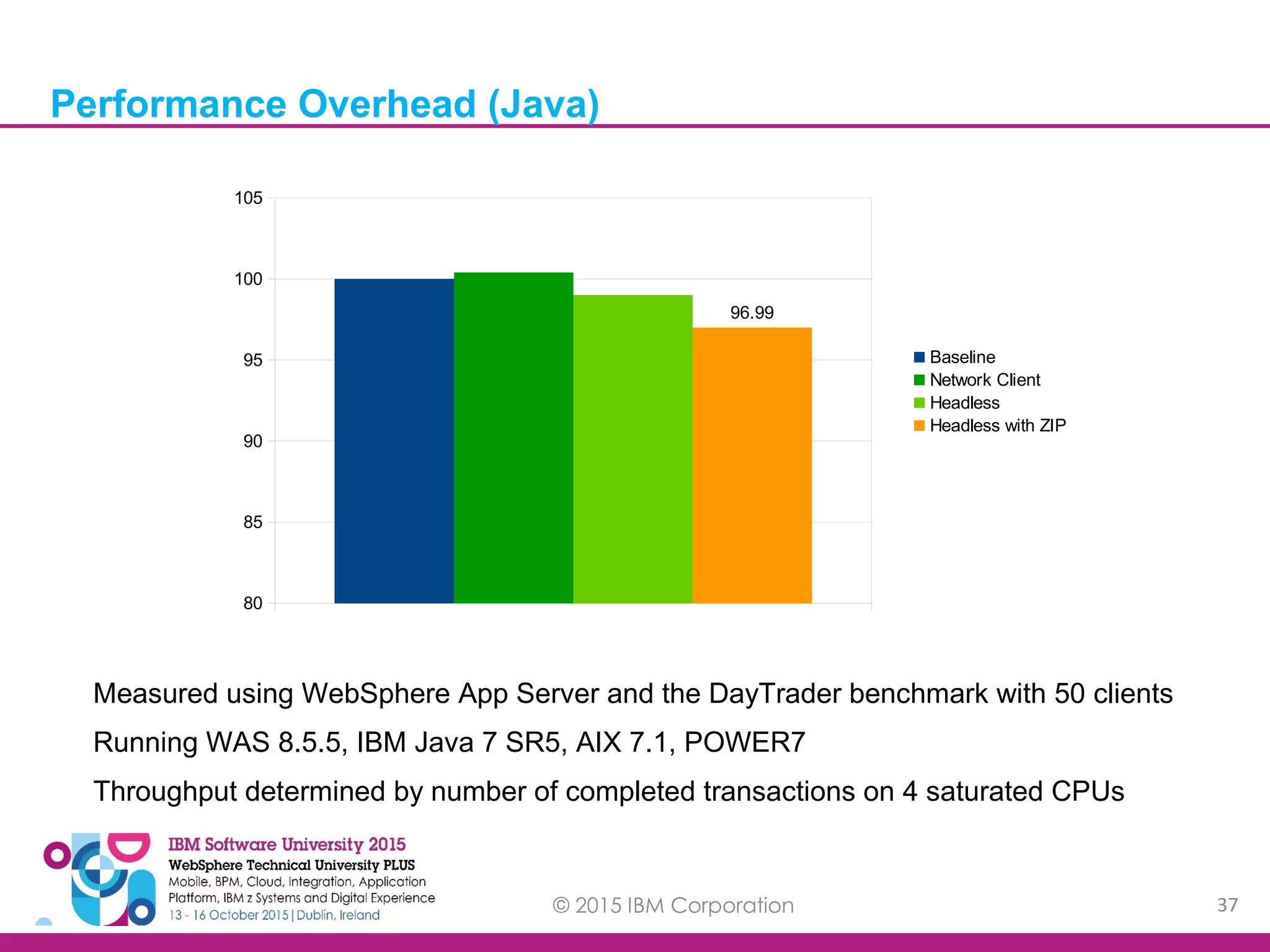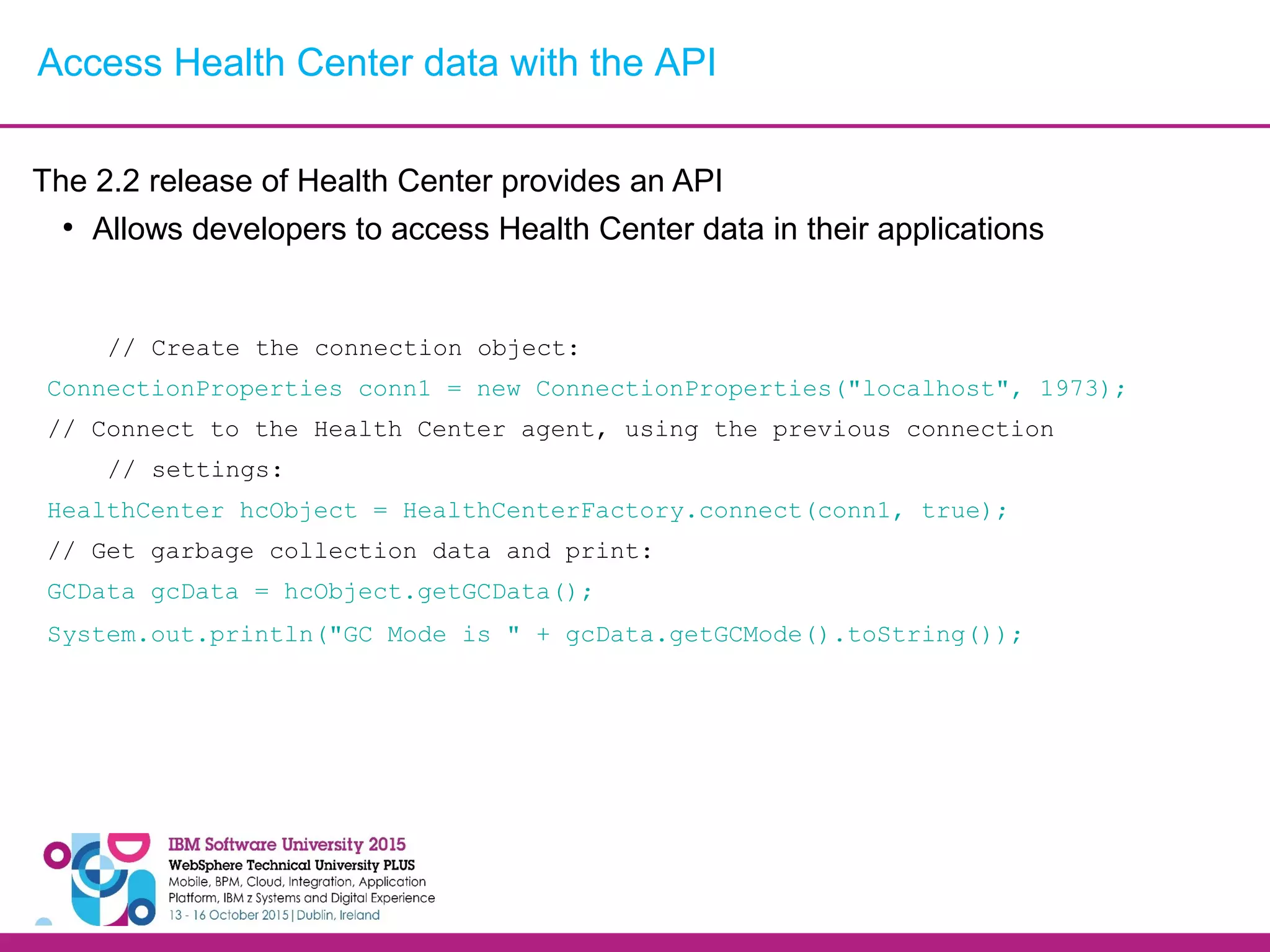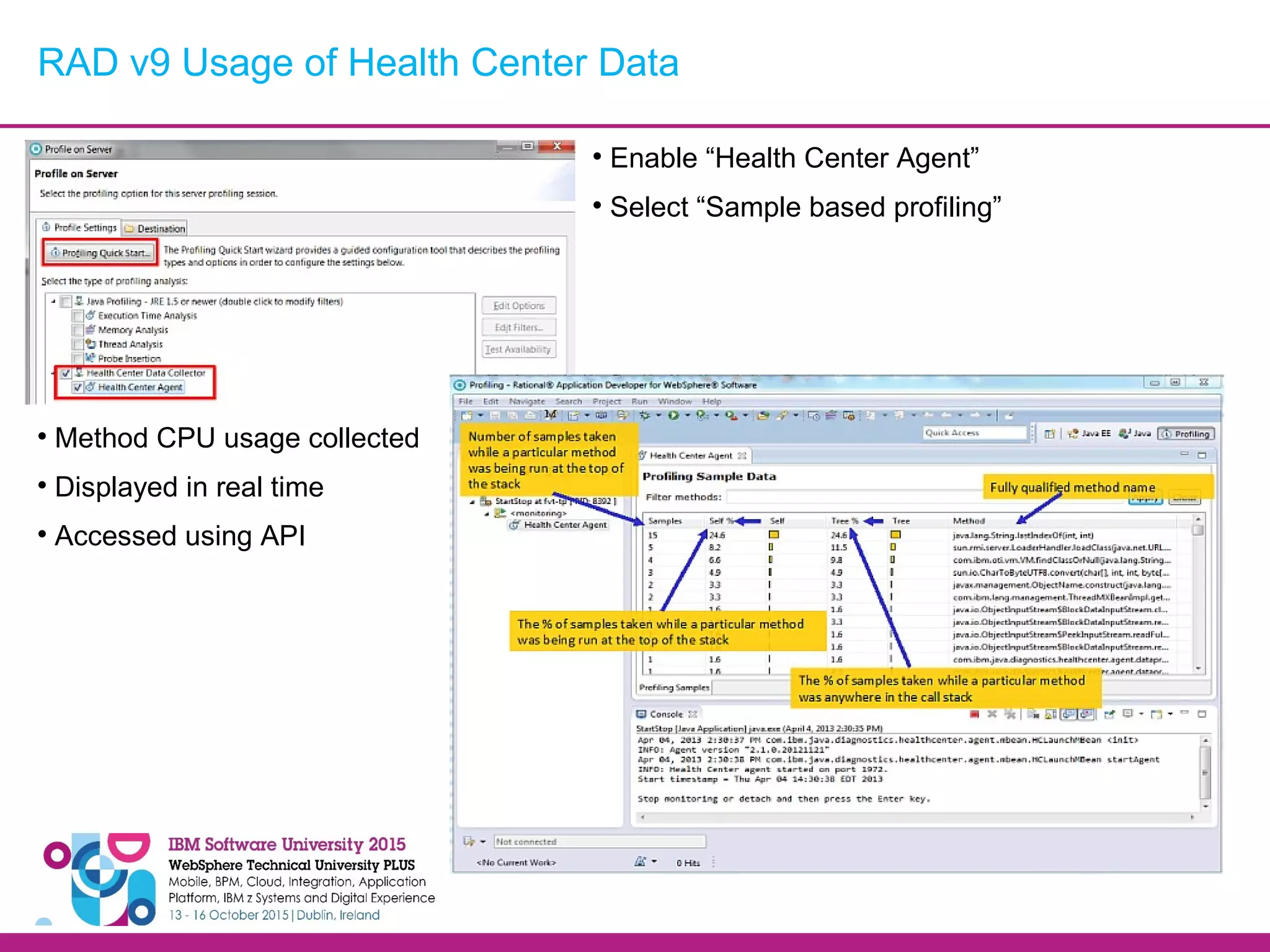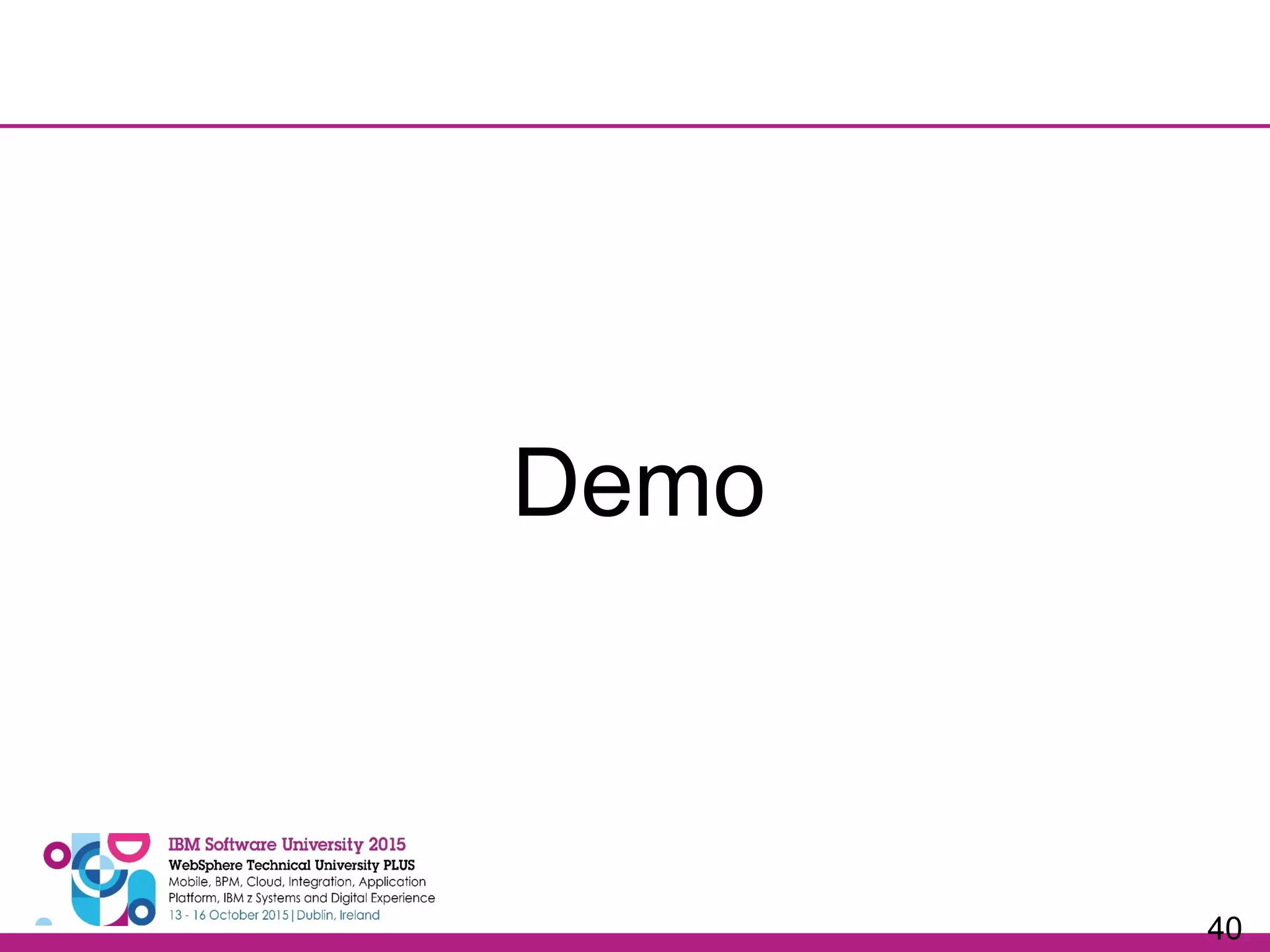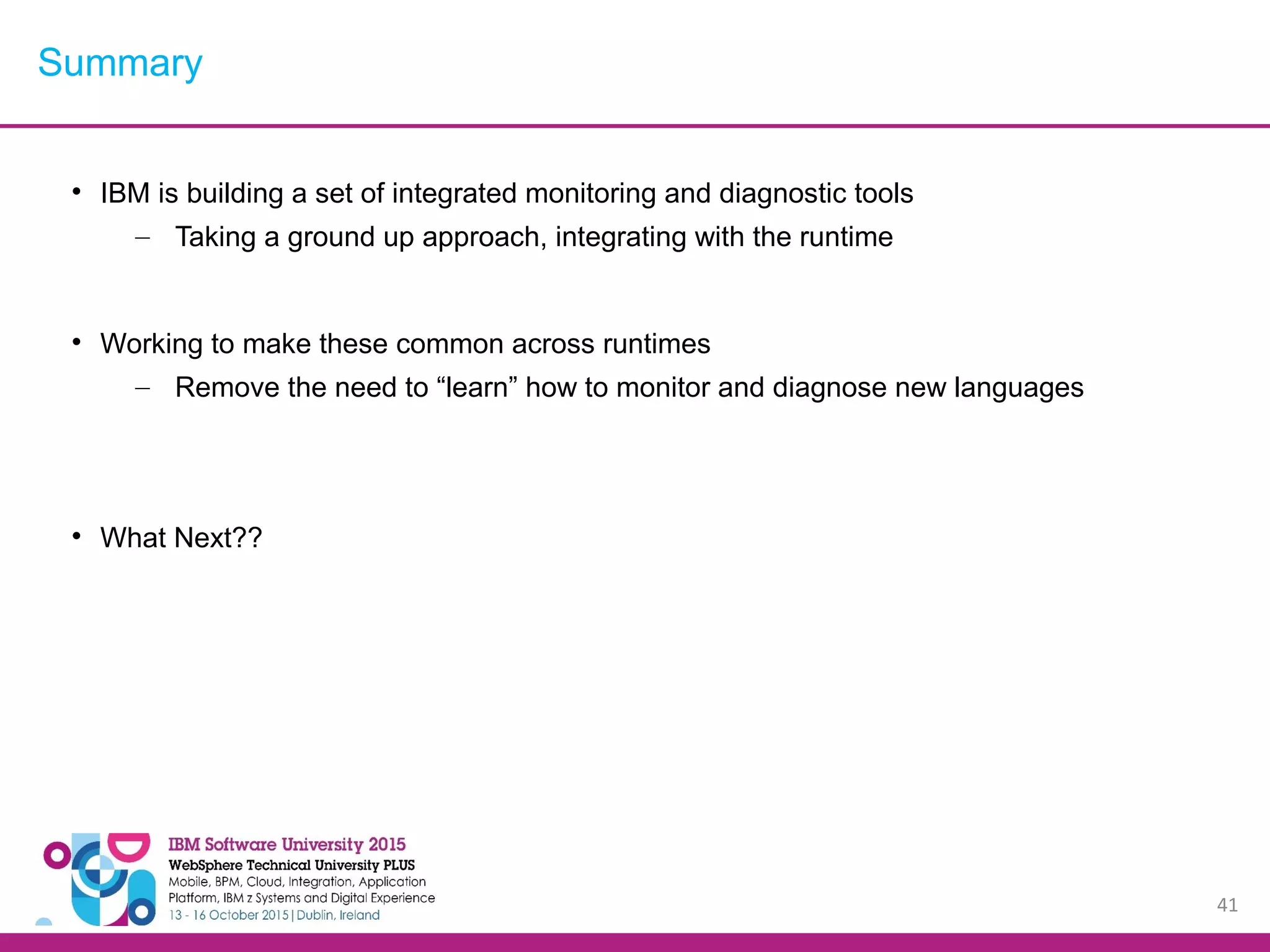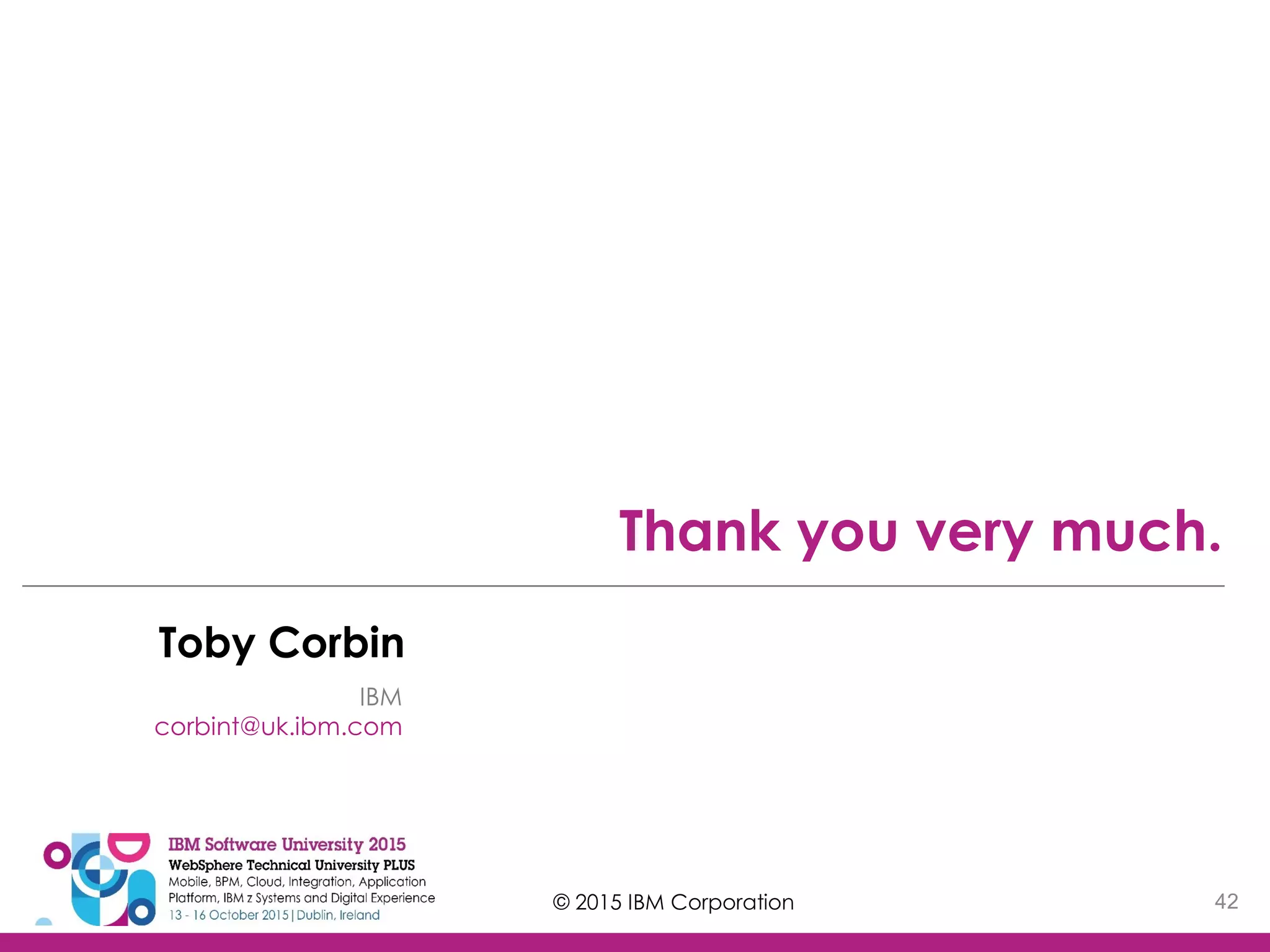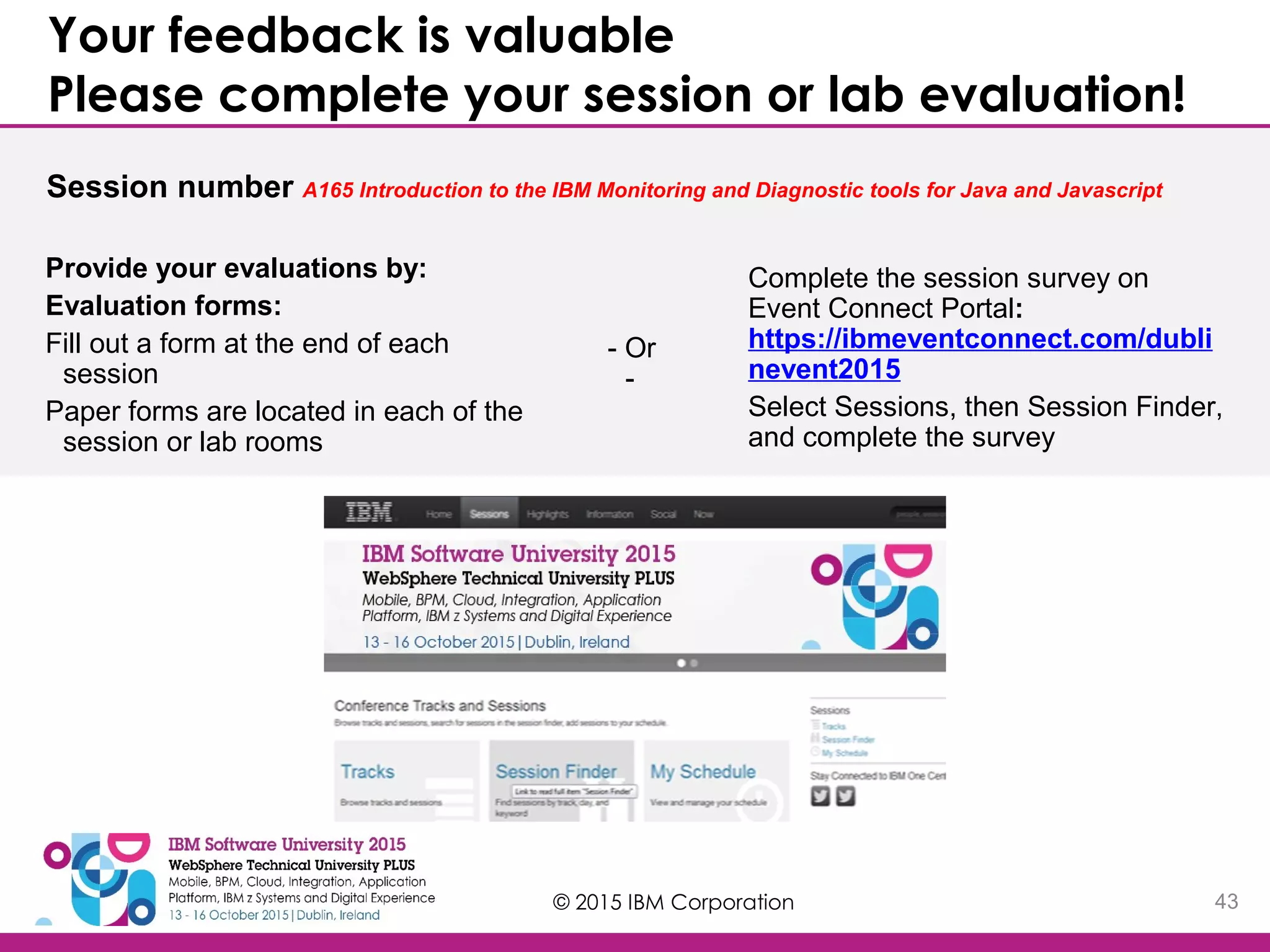This document summarizes an introduction presentation on IBM's monitoring and diagnostic tools for Java and JavaScript. It introduces several reactive and proactive tools, including the Garbage Collection and Memory Visualizer (GCMV) for analyzing garbage collection and memory usage data offline, the Interactive Diagnostic Data Explorer (IDDE) for analyzing crash dumps, and Health Center for low overhead runtime monitoring. It provides an overview of the capabilities and use cases of each tool and how to collect relevant application and runtime data.
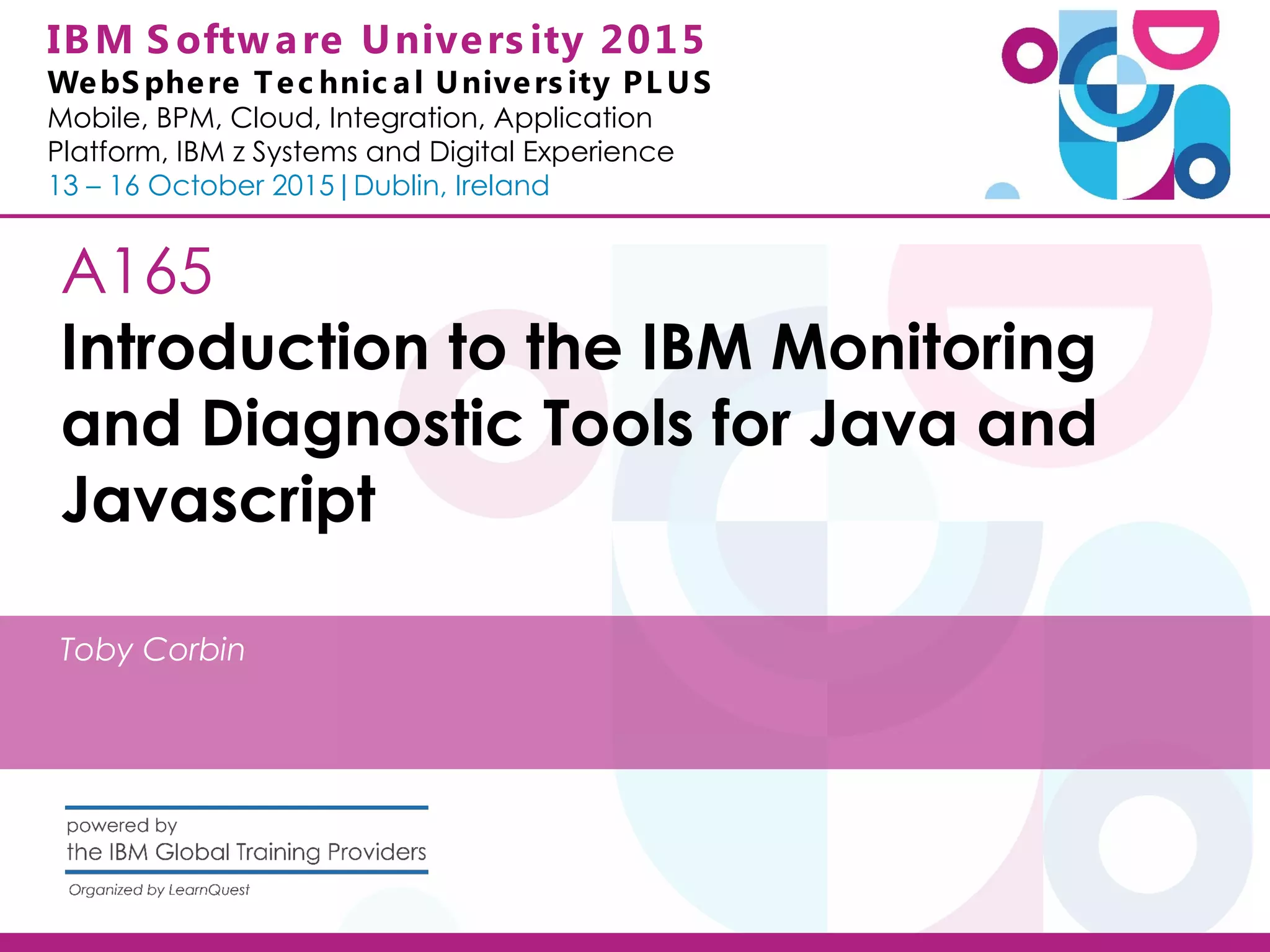
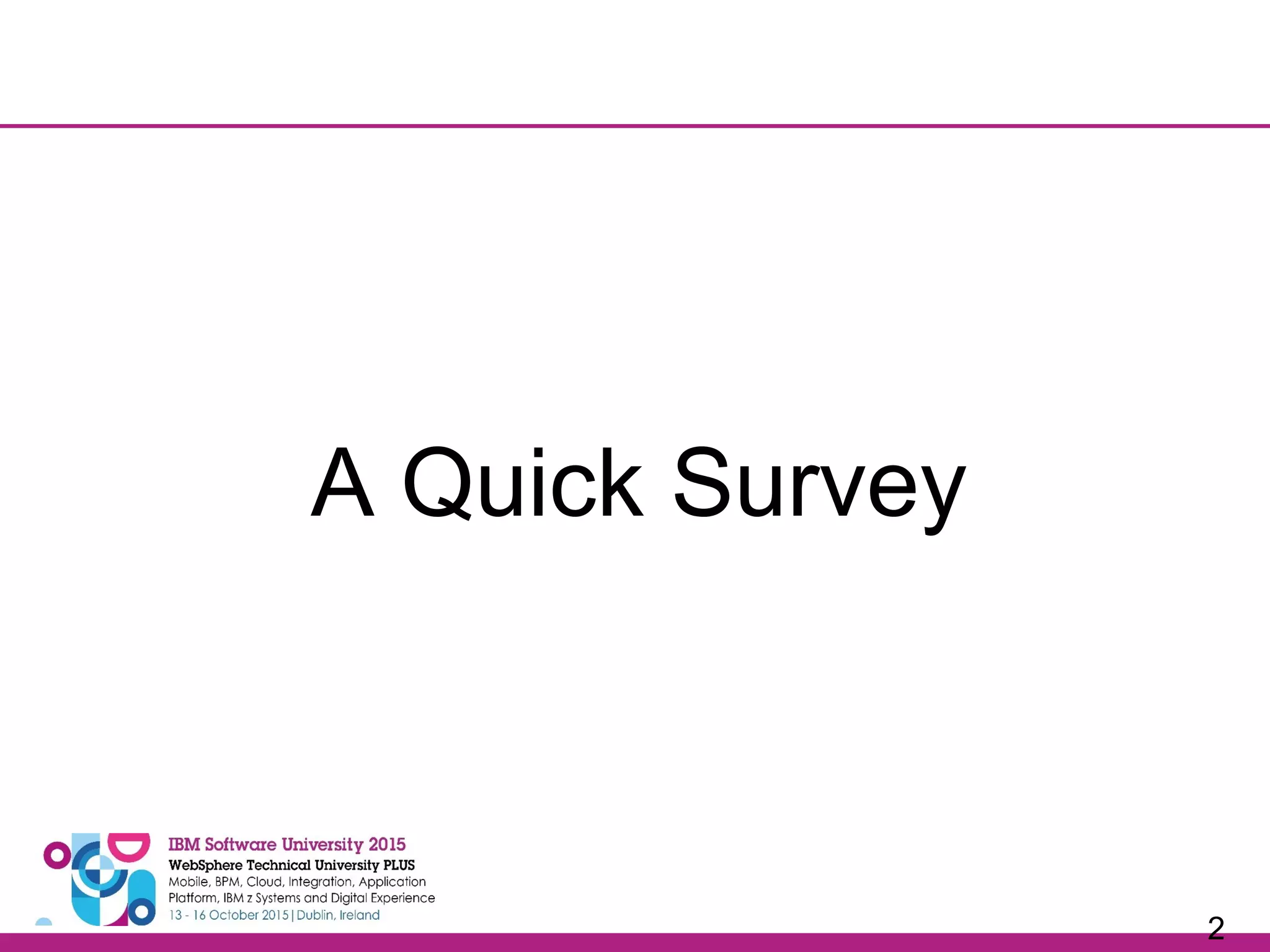
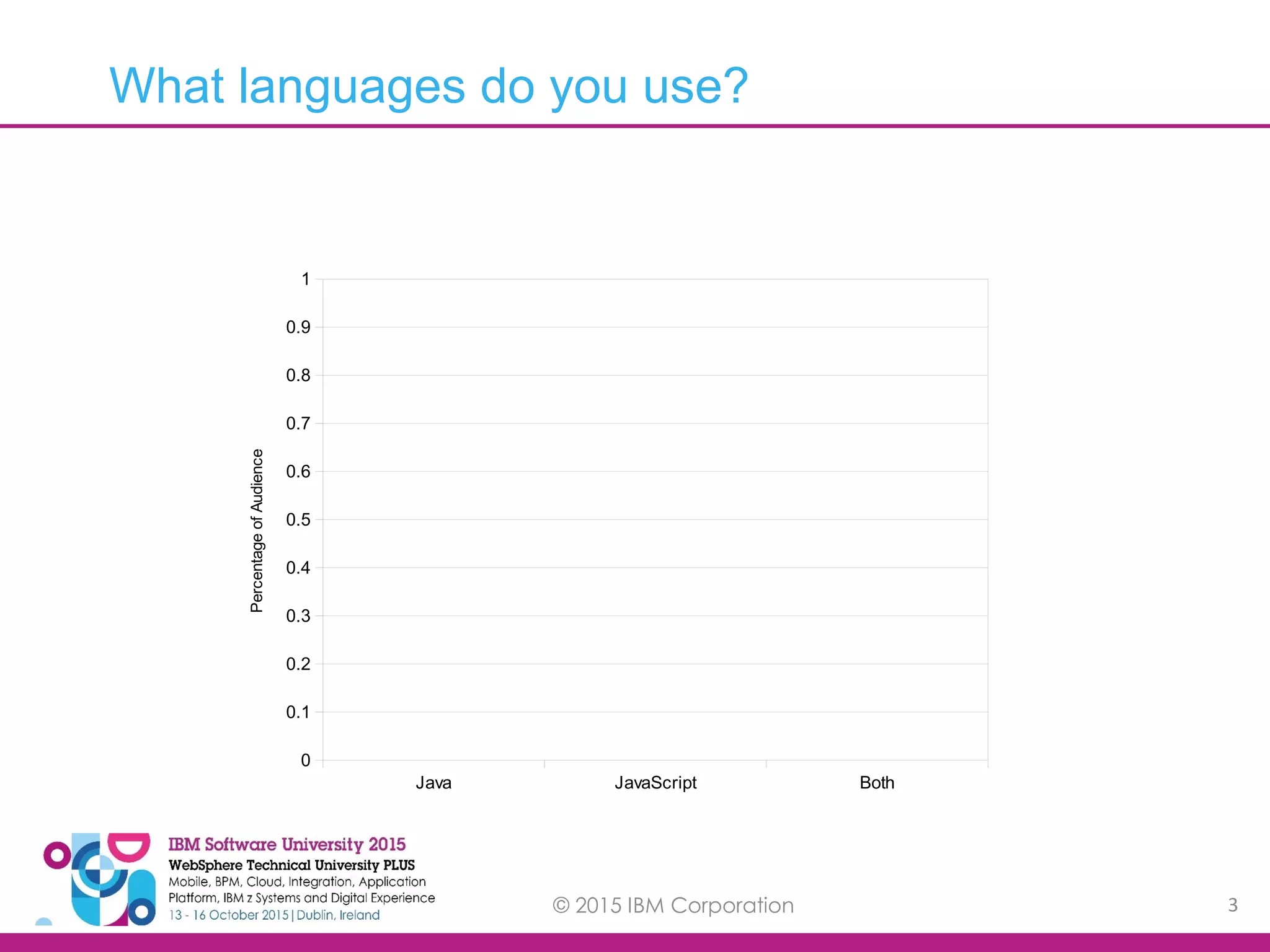
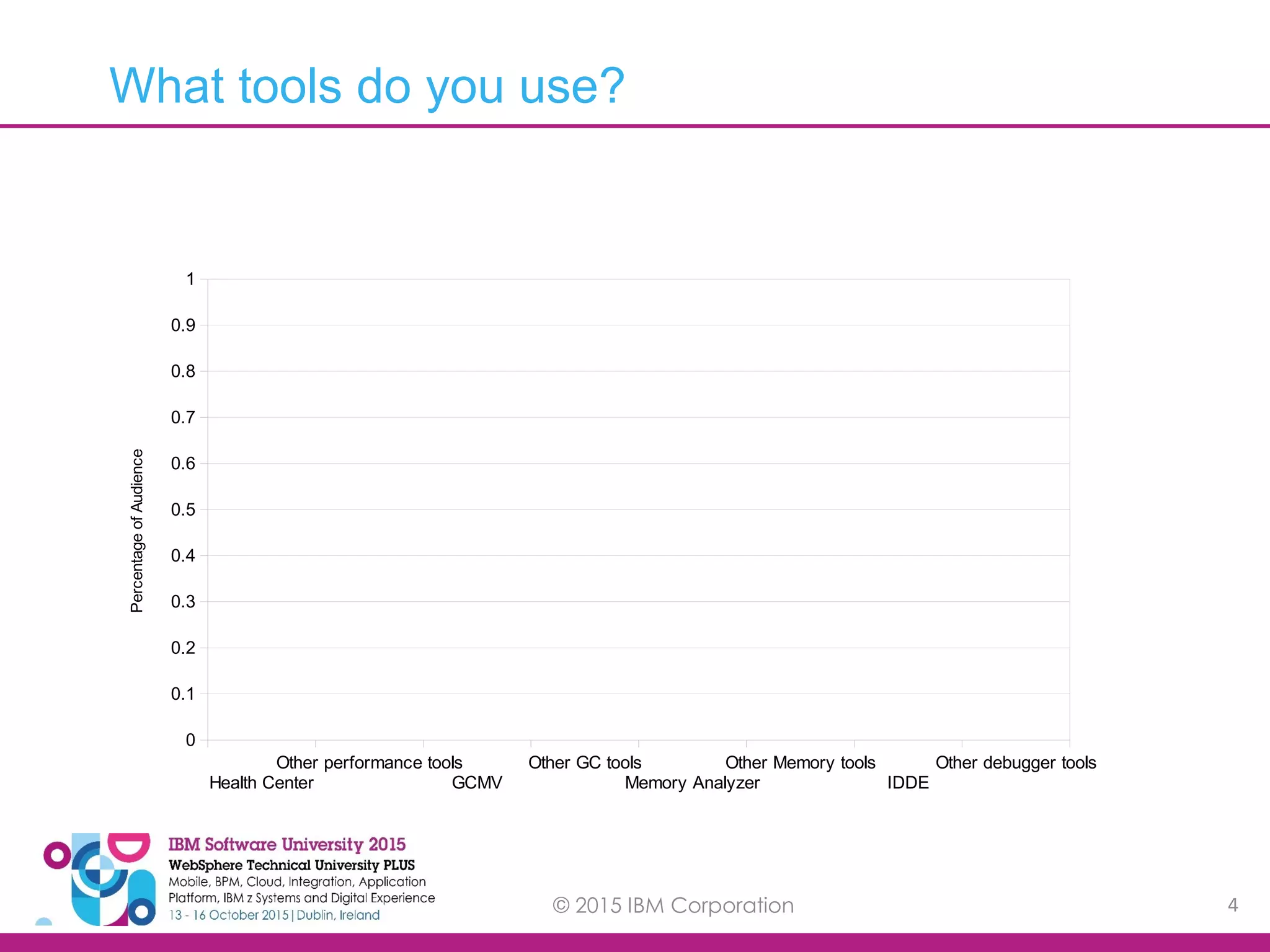
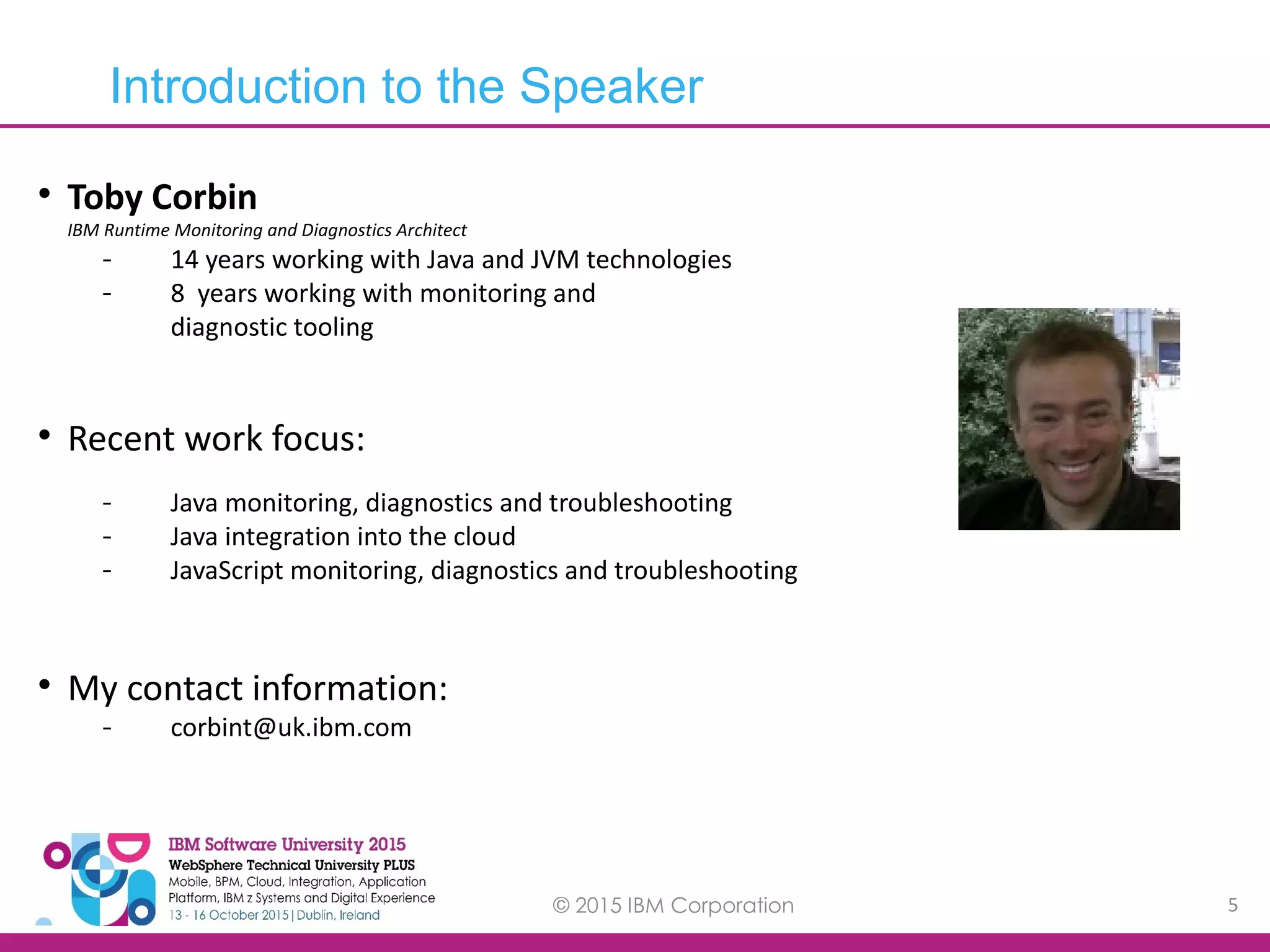
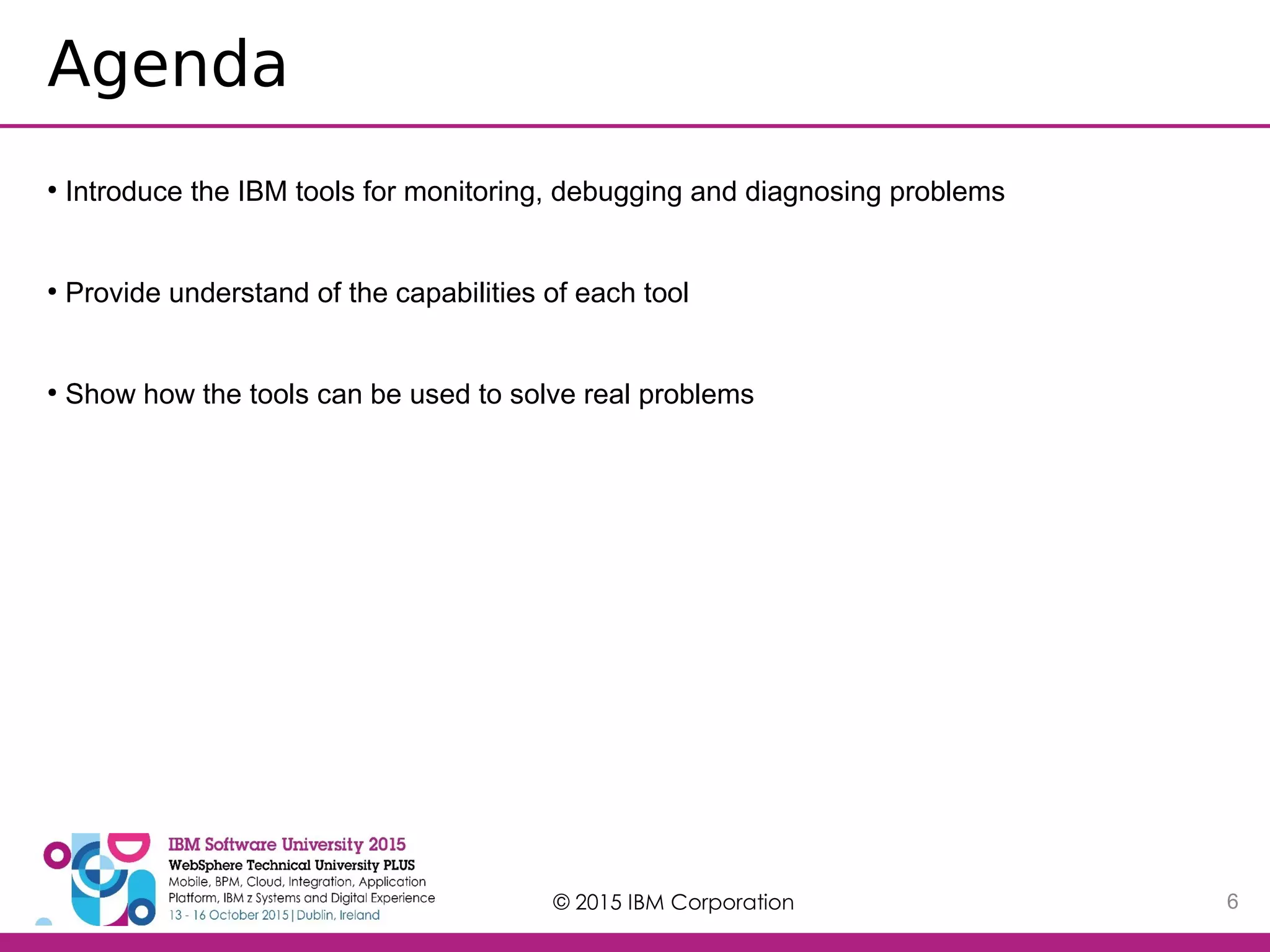
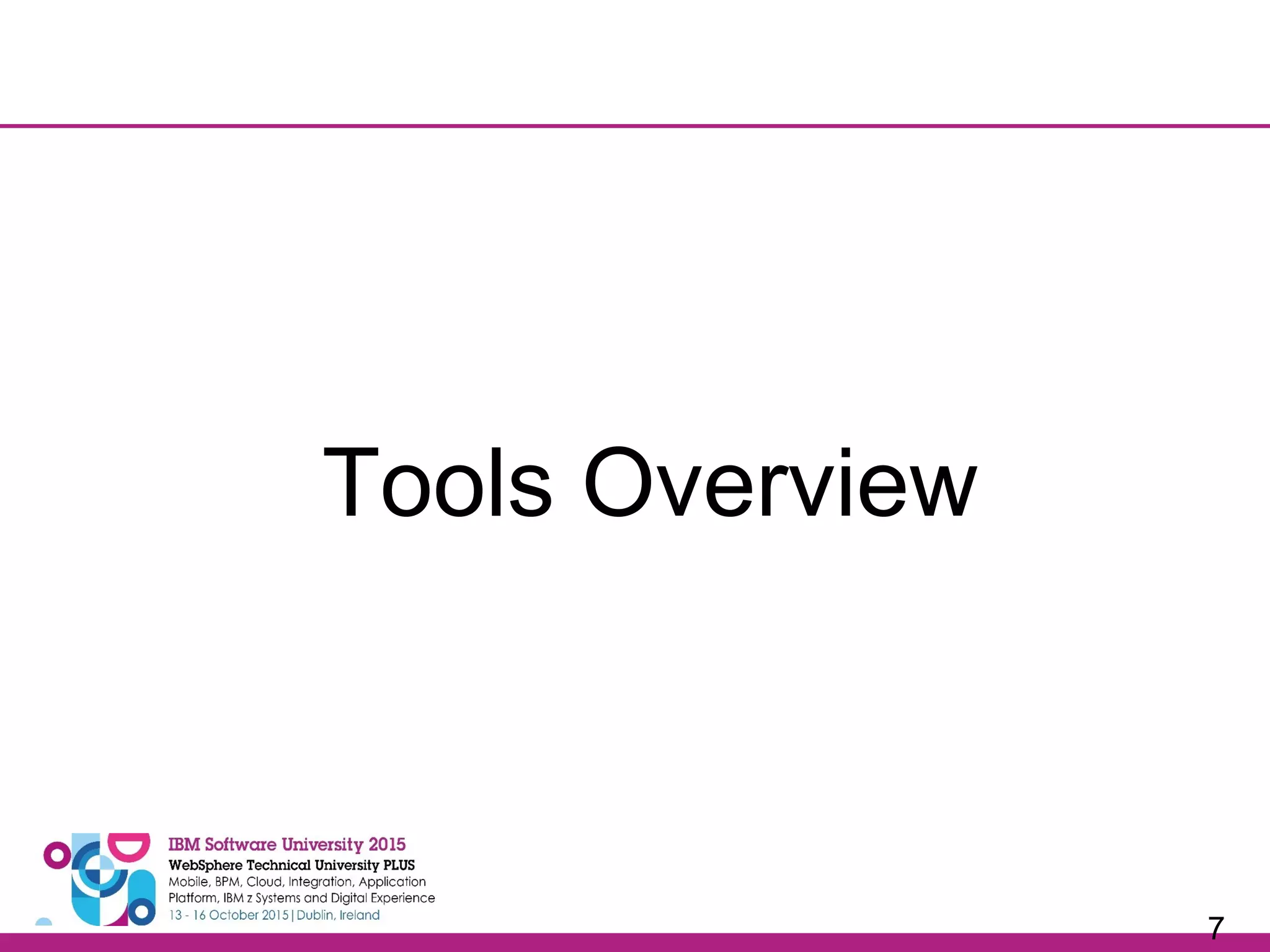
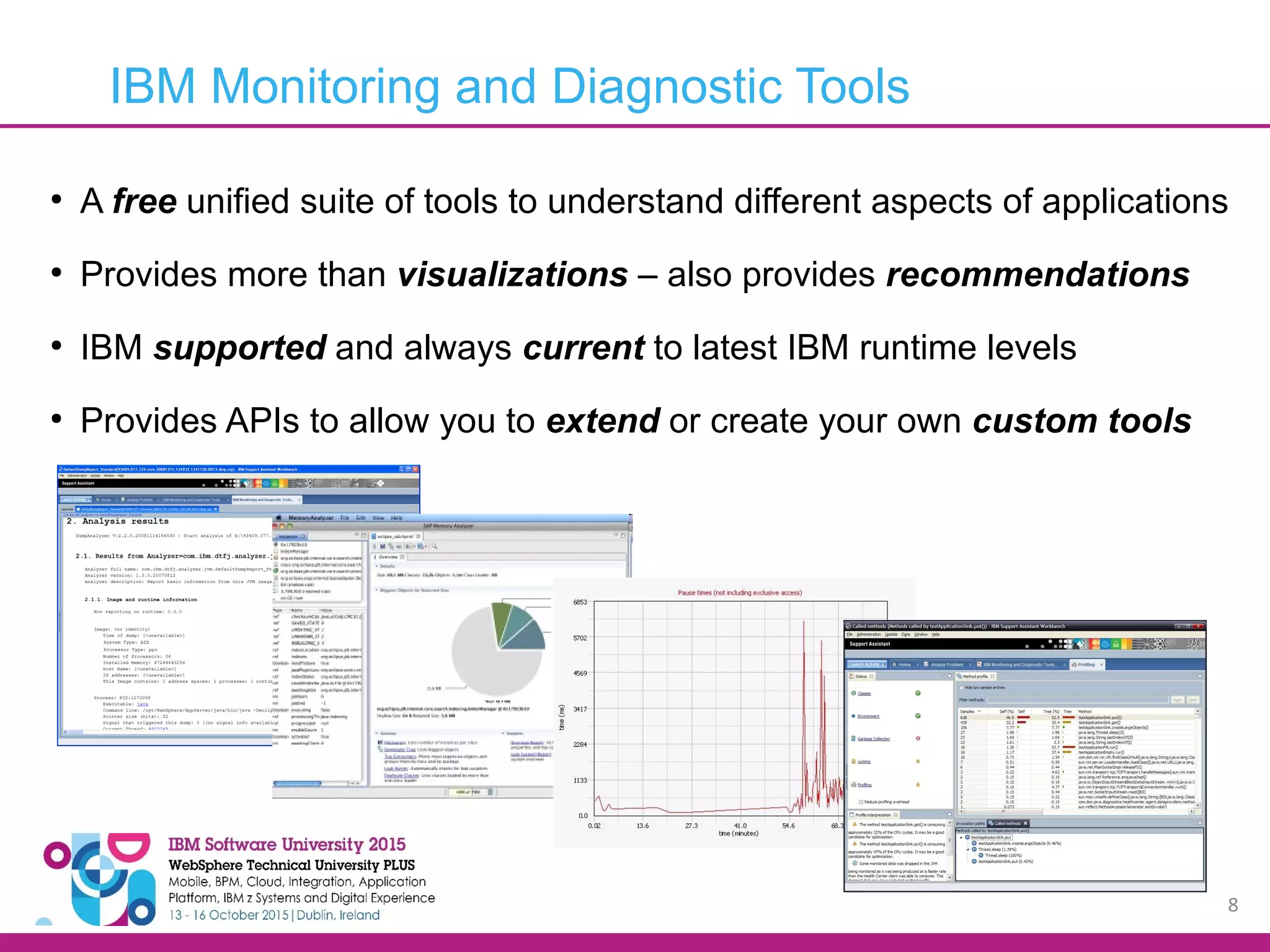
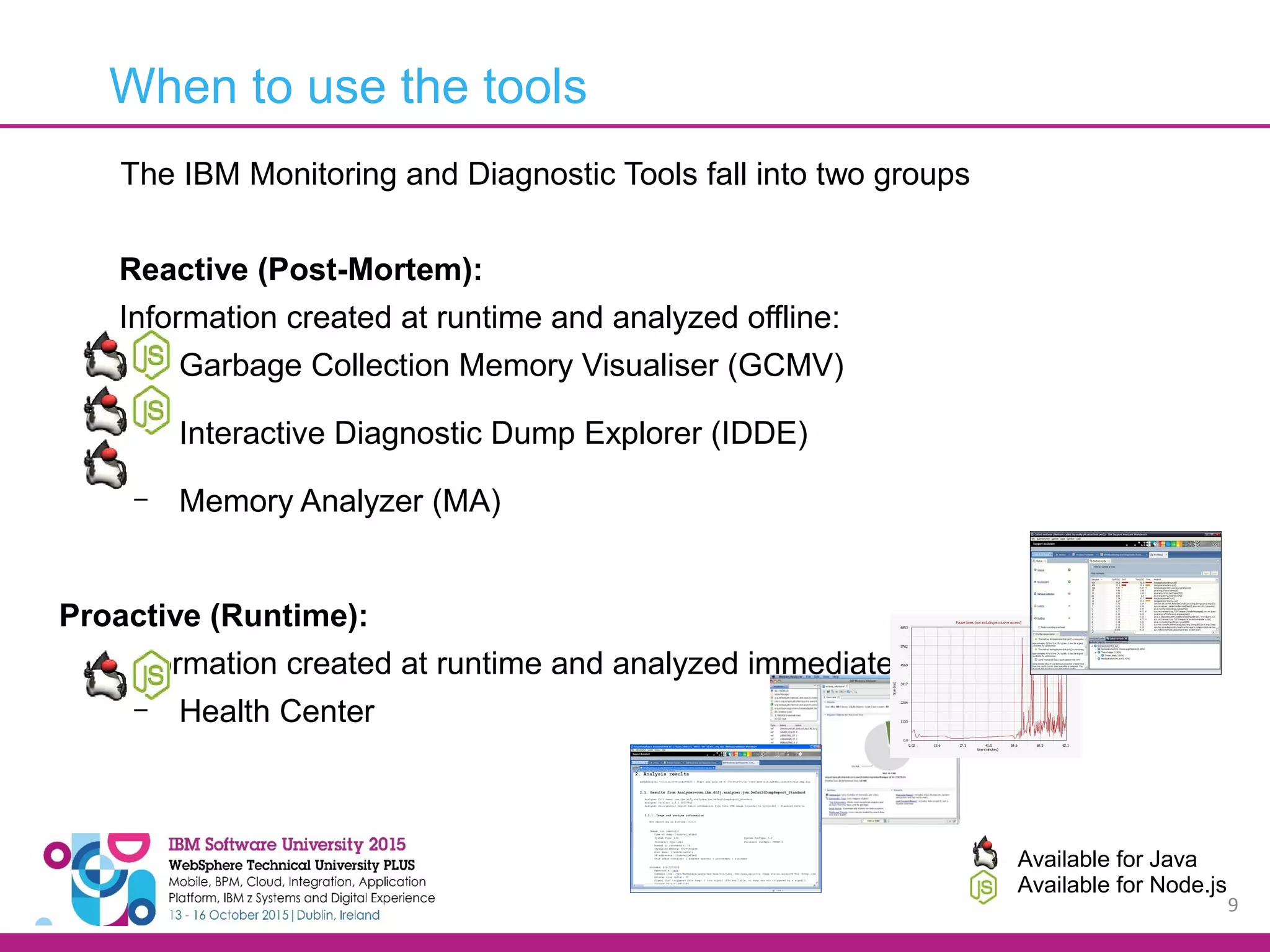
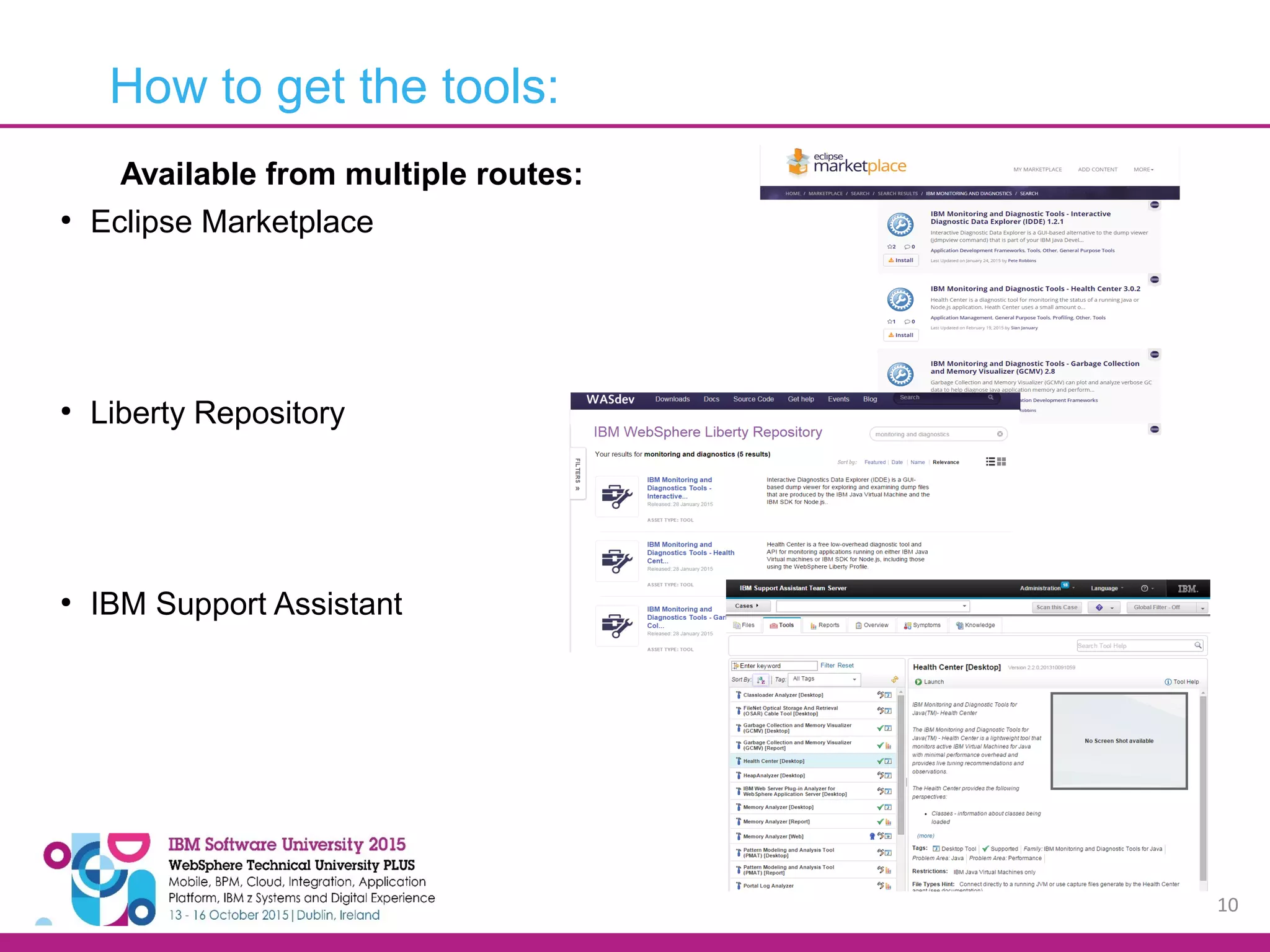
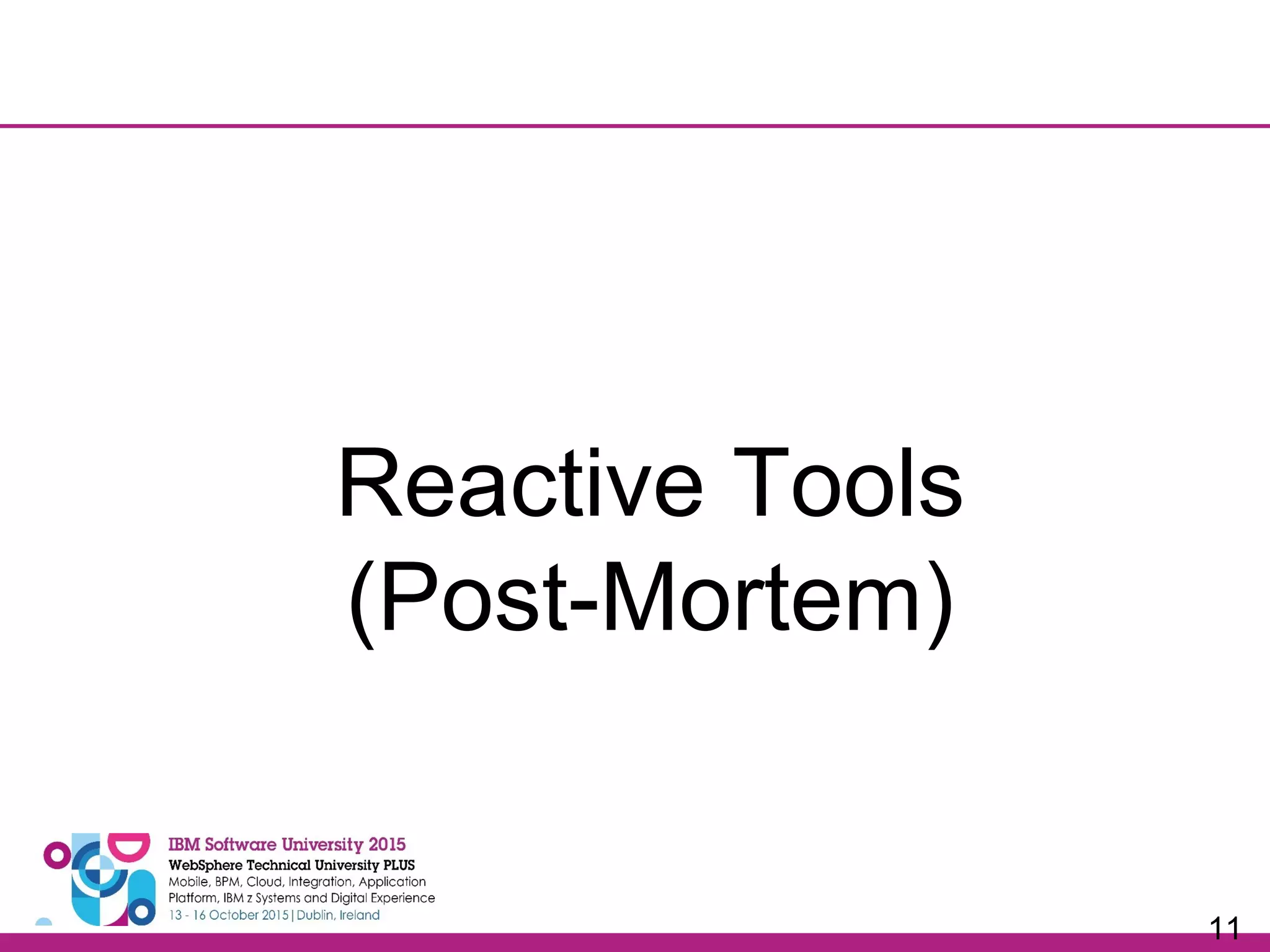
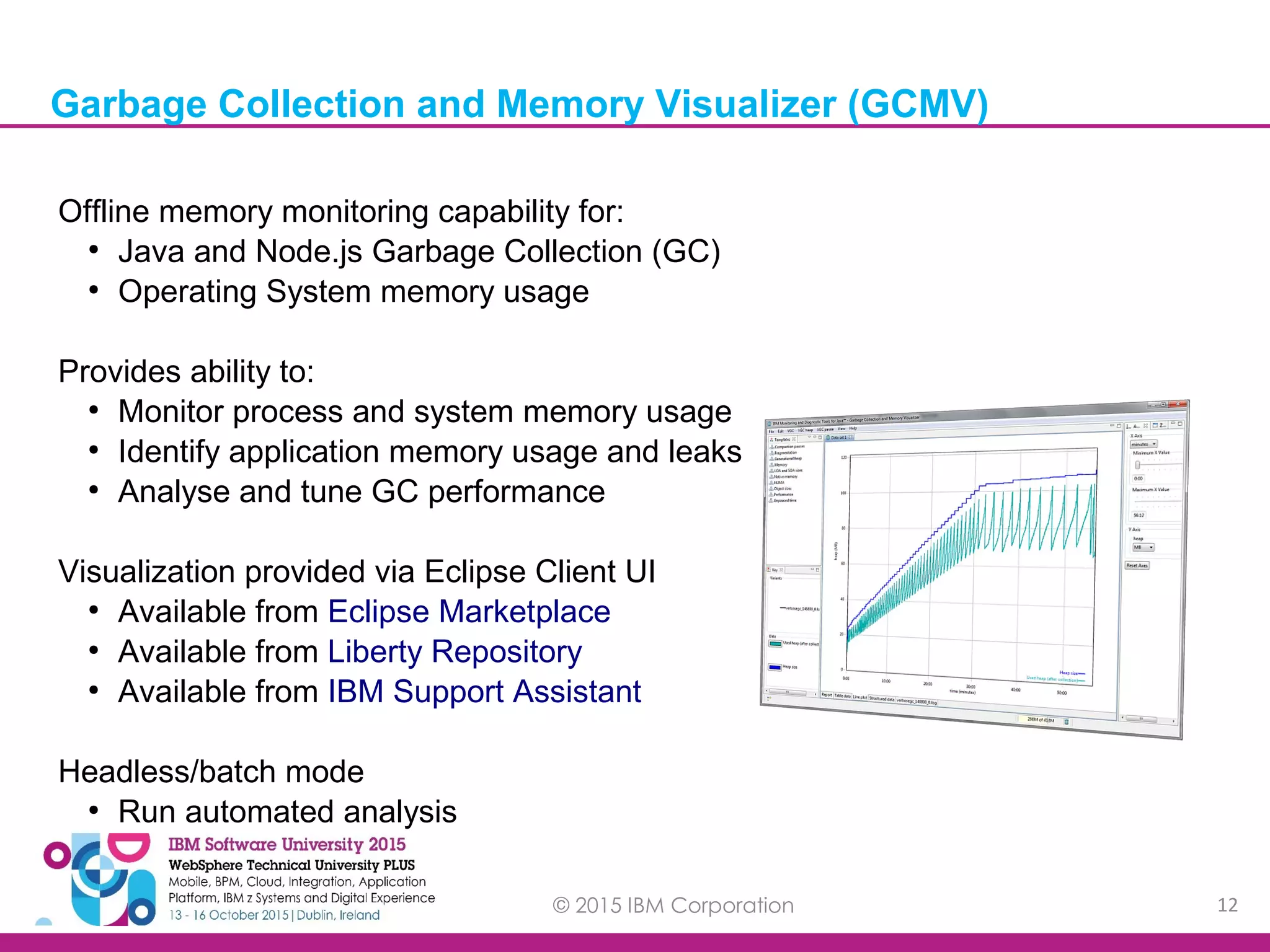
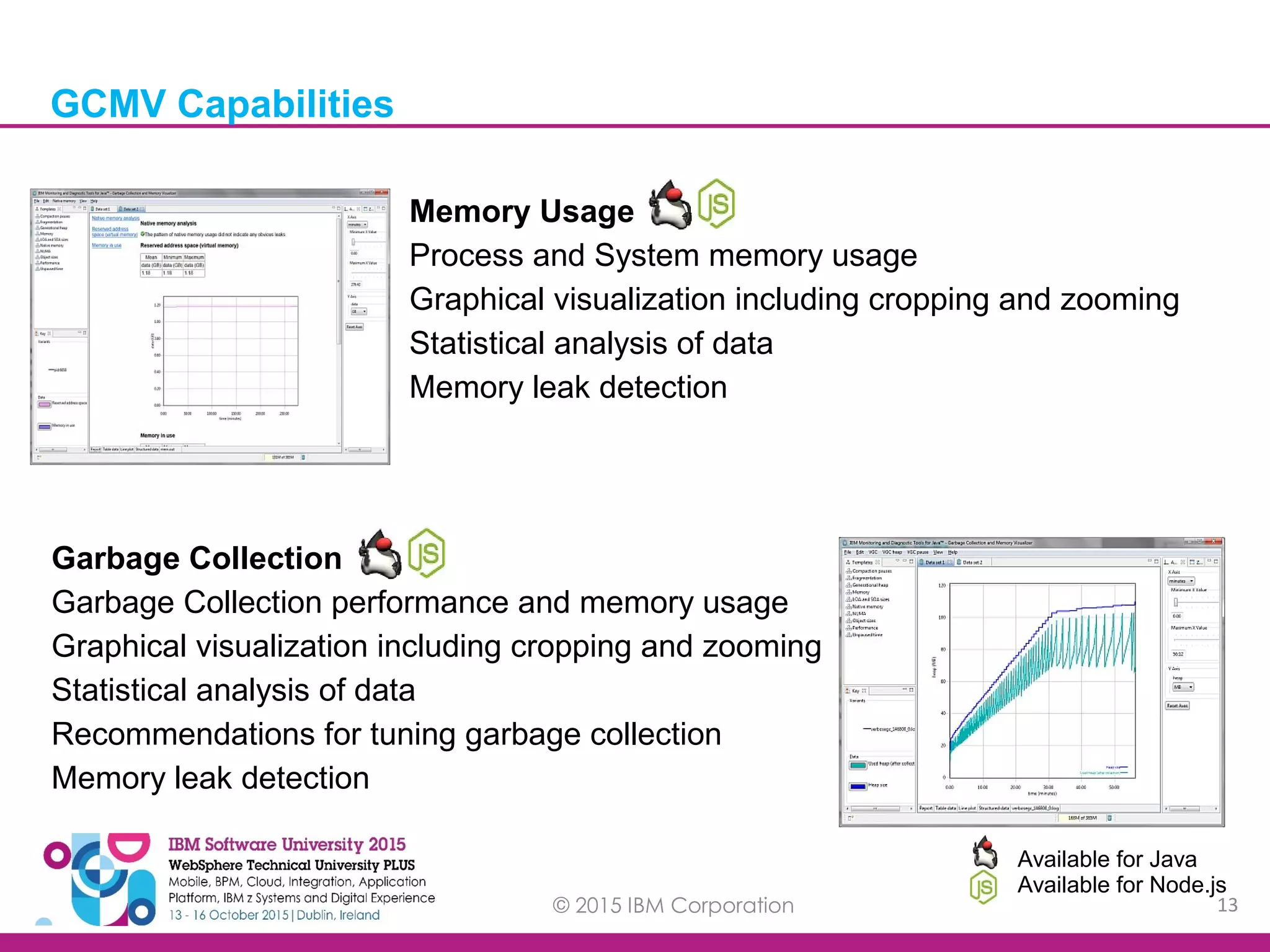
![© 2015 IBM Corporation 14 #!/bin/sh PID=$1 INTERVAL=3 # Echo time at start of monitoring. echo timestamp = `date +%s` # Echo the interval frequency. echo "ps interval = $INTERVAL" # Run the system command at intervals. while ([ -d /proc/$PID ]) do ps -p $PID -o pid,vsz,rss sleep $INTERVAL done #!/bin/sh PID=$1 INTERVAL=3 # Echo time at start of monitoring. echo timestamp = `date +%s` # Echo the interval frequency. echo "svmon interval = $INTERVAL" # Run the system command at intervals. while ([ -d /proc/$PID ]) do svmon -r -m -P $PID sleep $INTERVAL done #!/bin/sh PID=$1 INTERVAL=3 # Echo time at start of monitoring. echo timestamp = `date +%s` # Echo the interval frequency. echo "svmon interval = $INTERVAL" # Run the system command at intervals. while true ; do ps -p $PID -o pid,vsz sleep $INTERVAL done Run perfmon Select “Performance Logs and Alerts > Counter Logs” Create a log file name, eg. Memory Usage Click “Add Counters...” Select “Process > Virtual Bytes” from Counters Select you process from Instances Select “Add” and “Close” Click “Log Files” and “Text File (Comma delimited)” Select “Schedule” and then “Manually” in Start log Start logging by clicking “Start” Linux AIX Windows zOS Note: Scripts are provided in the Help documentation Collecting Process Memory Data](https://image.slidesharecdn.com/a165-toolsforjavaandjavascript-160323163350/75/A165-tools-for-java-and-javascript-14-2048.jpg)
![© 2015 IBM Corporation 15 -Xverbosegclog:[FILE_NAME] --trace_gc --trace_gc_nvp --trace_gc_verbose Java : IBM SDKs Node.js Java: Oracle and Open JDKs Note: Scripts are provided in the Help documentation Log verbose GC data to a given file name -Xverbosegclog:[FILE_NAME],[FILES],[ENTRIES] Log verbose GC data to a rolling number of files, each With a maximum number of GC cycle entries -Xverbosegclog:vgc.%Y%m%d.%H%M%S.%pid.txt Log data to a file name including token substitutions -XX:+PrintGCDateStamps -XX:+PrintGCDetails -XX:+PrintGCTimeStamps -Xloggc:[FILE_NAME] Log verbose GC data to a given file name Enable collection of date and time stamped GC data Log detailed verbose GC data to the console --trace_gc --trace_gc_nvp --trace_gc_verbose [APPLICATION] > [FILE_NAME] 2>&1 Capture the console to a given file name Collecting Garbage Collection Data](https://image.slidesharecdn.com/a165-toolsforjavaandjavascript-160323163350/75/A165-tools-for-java-and-javascript-15-2048.jpg)
